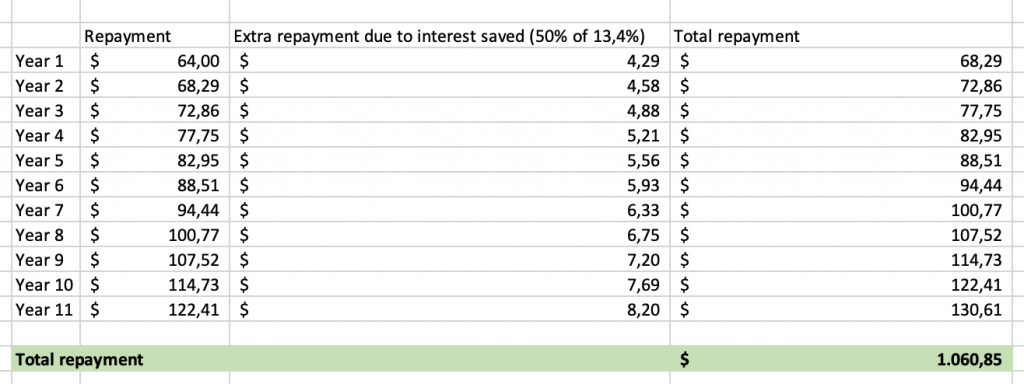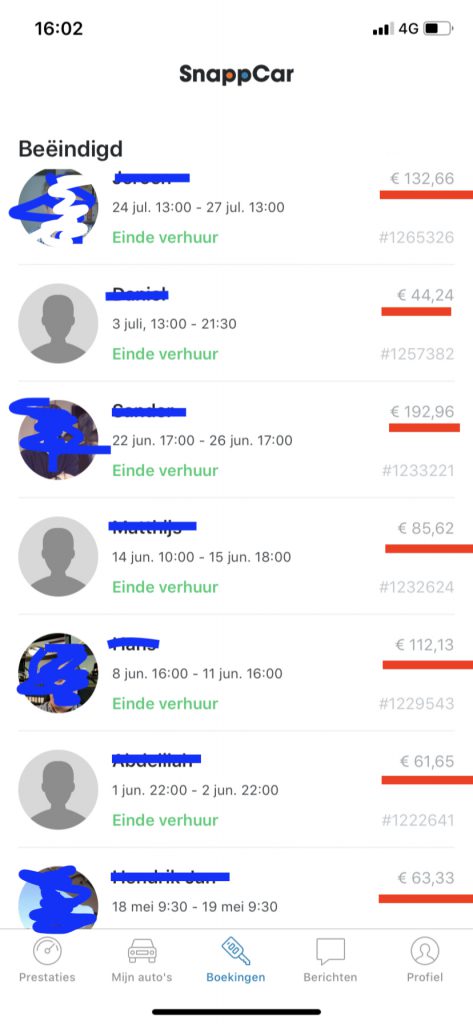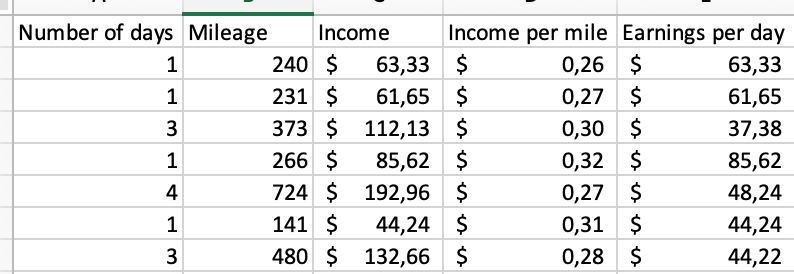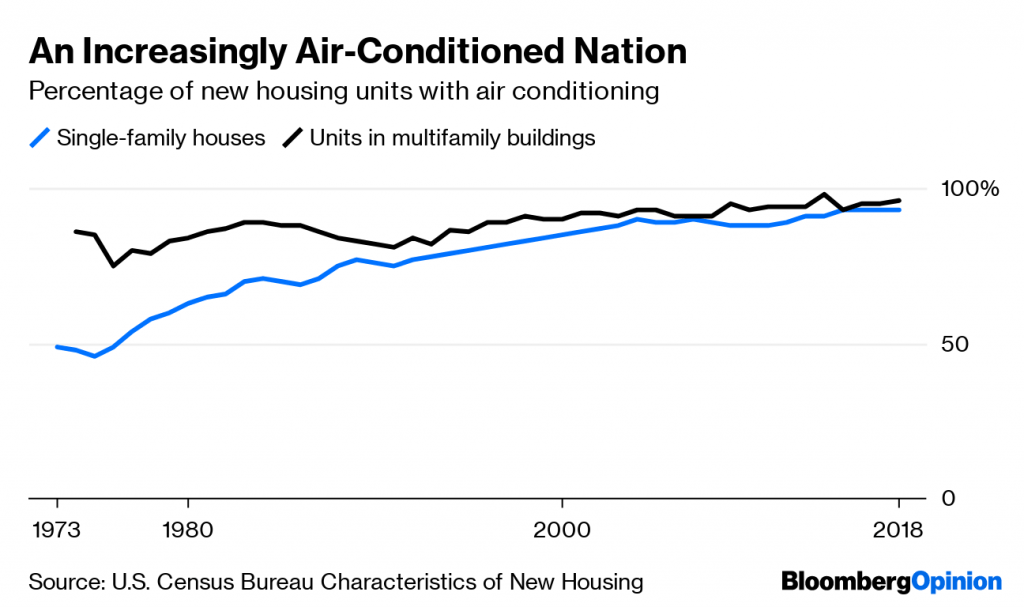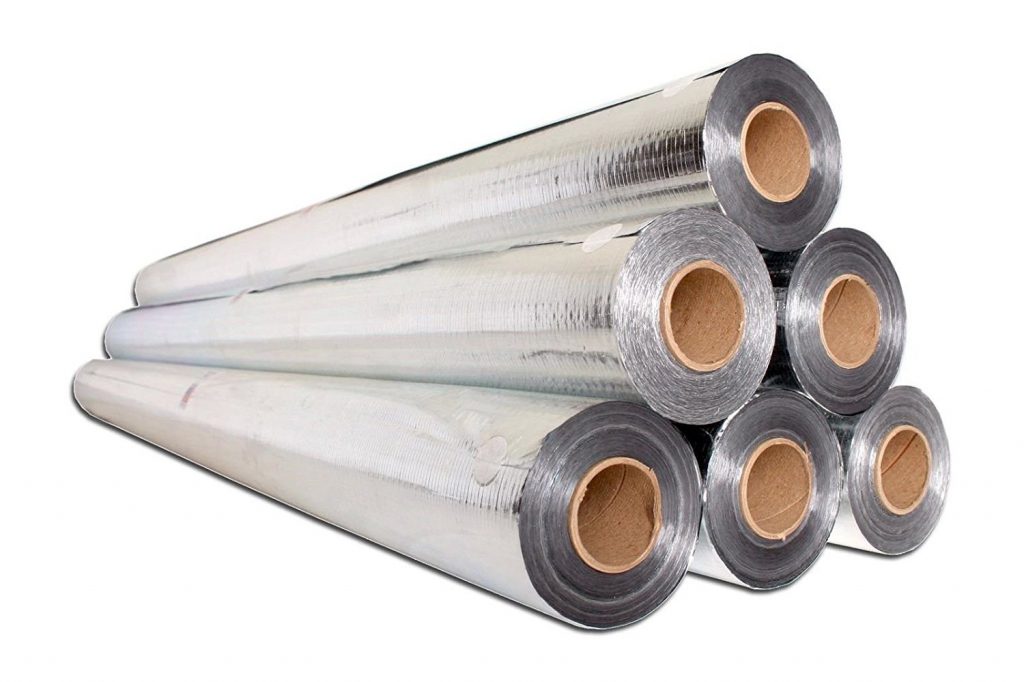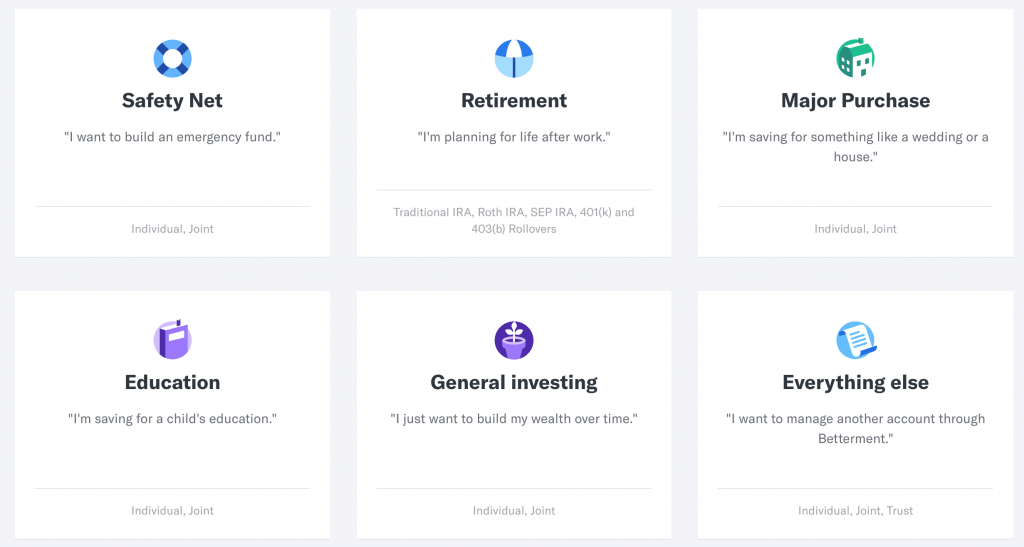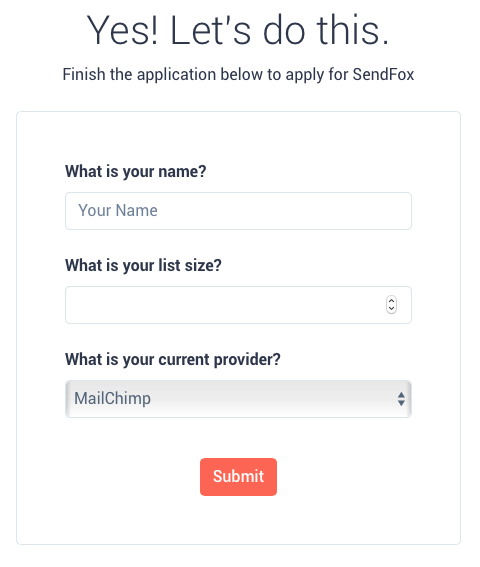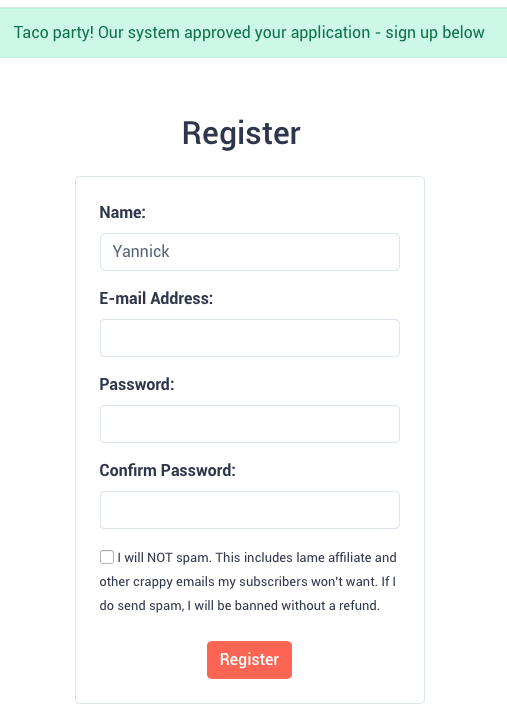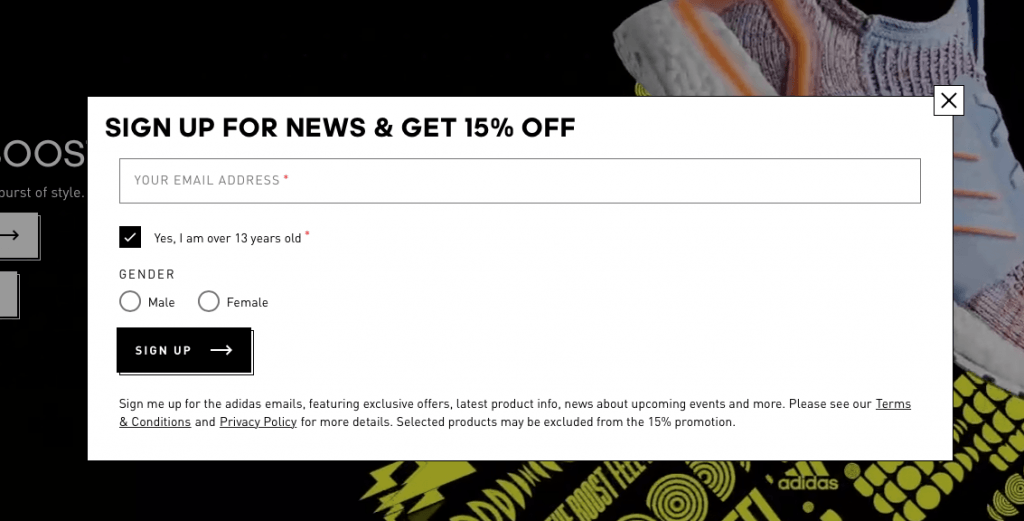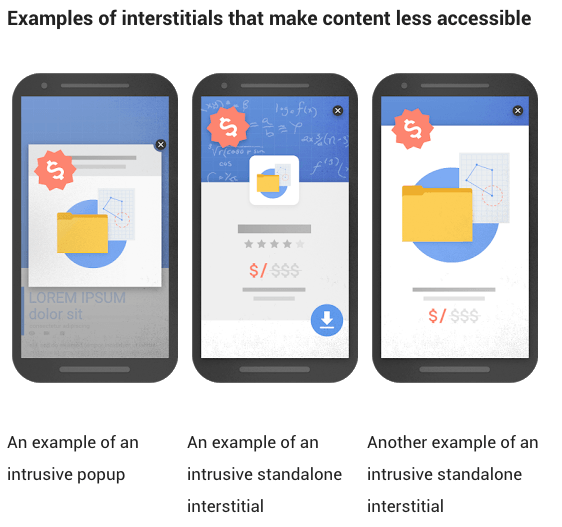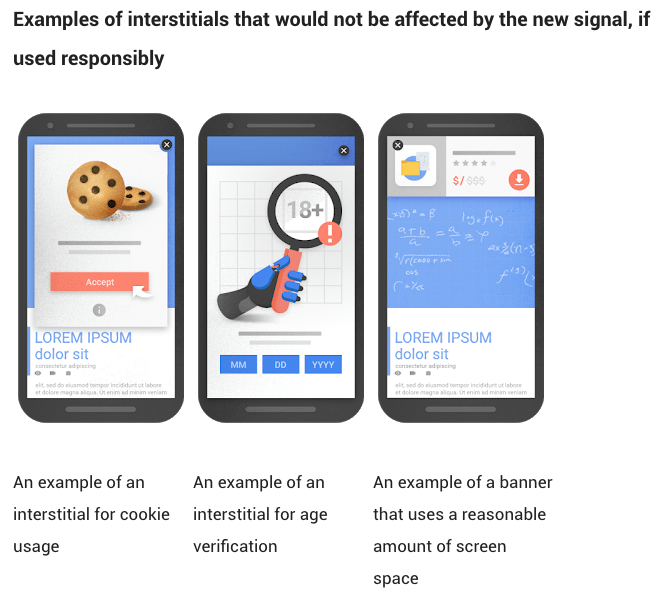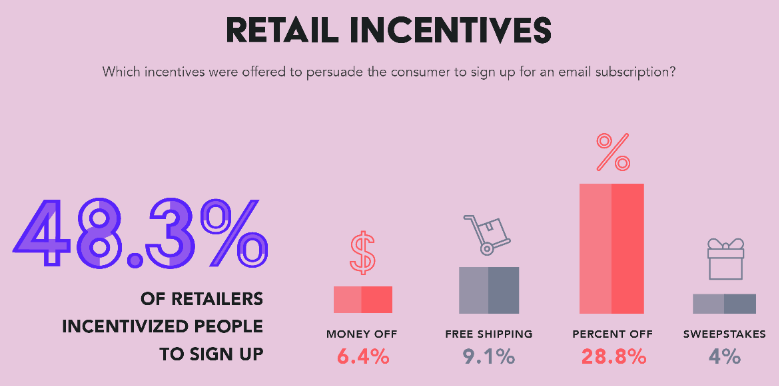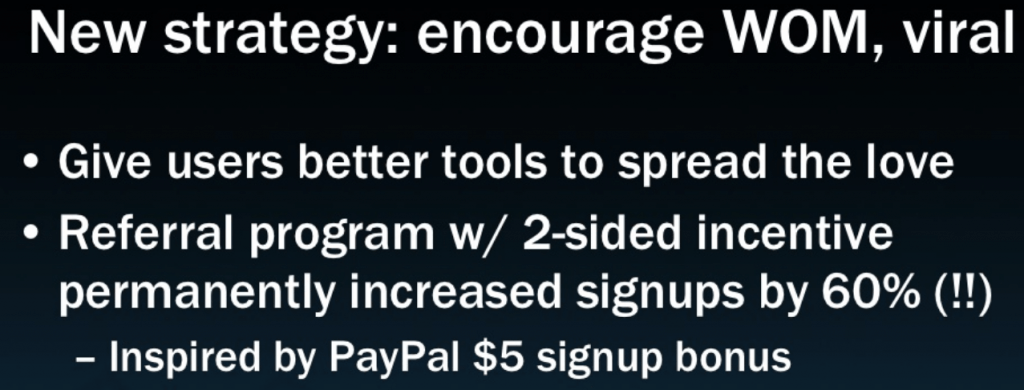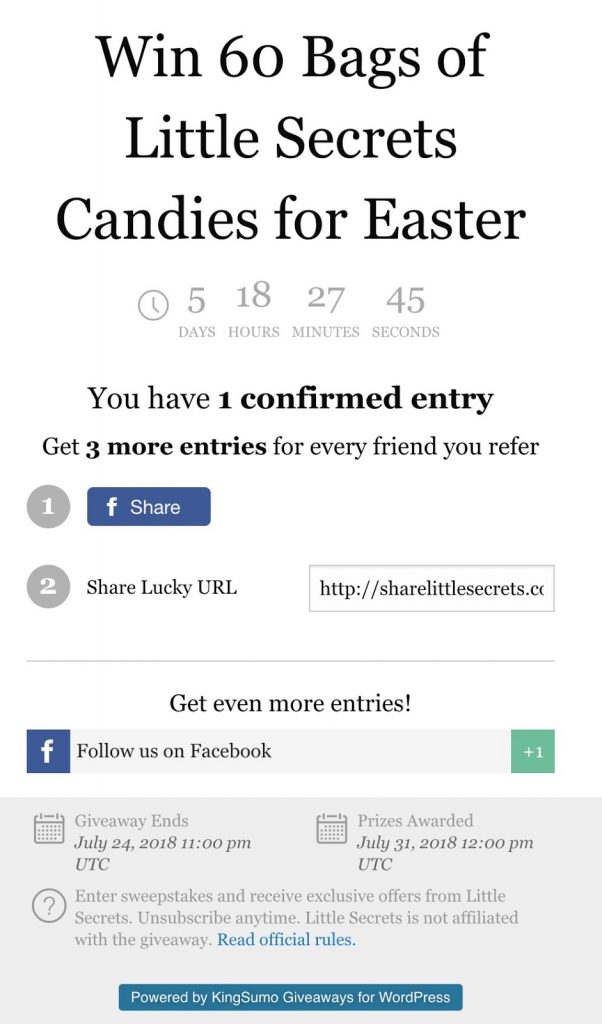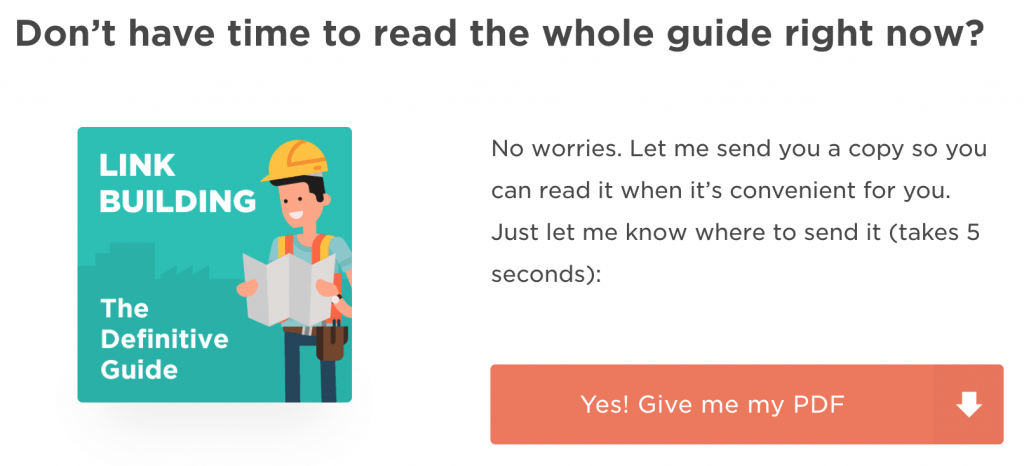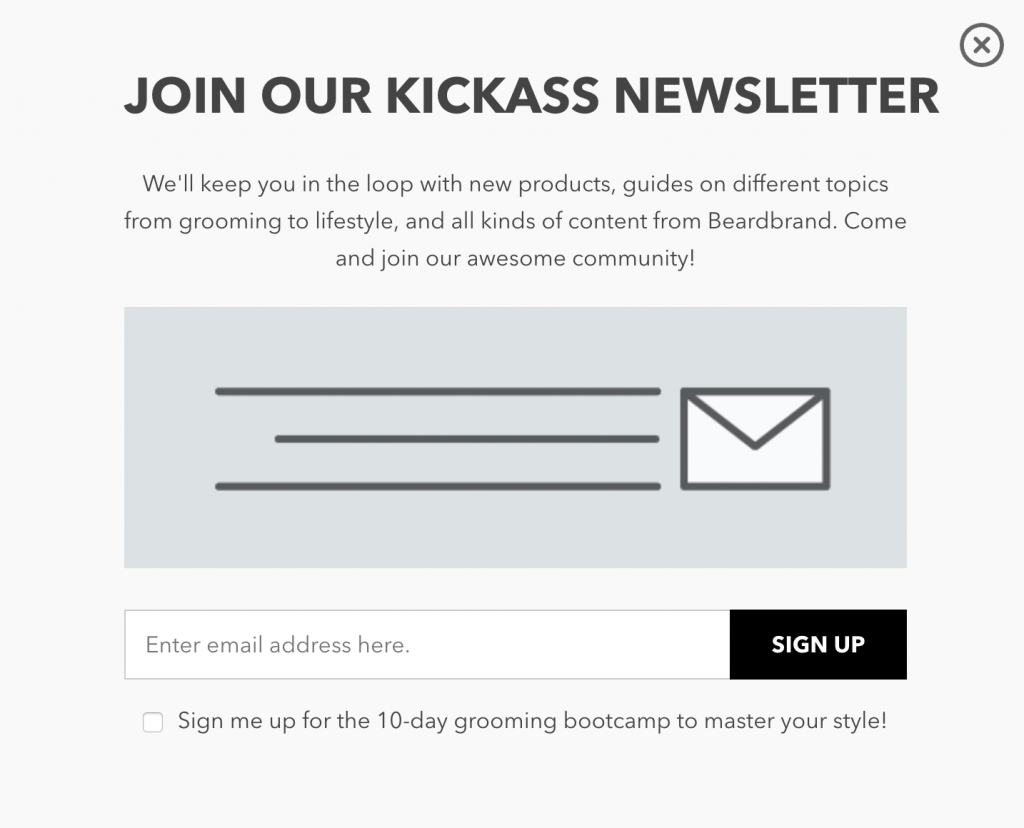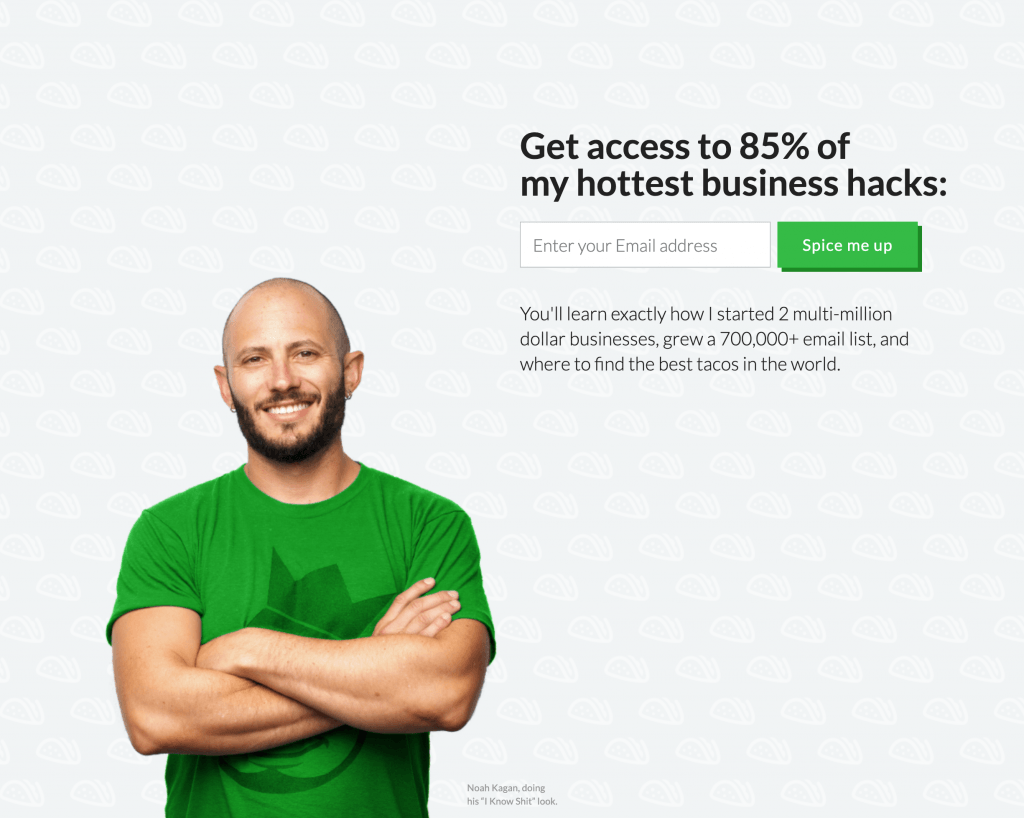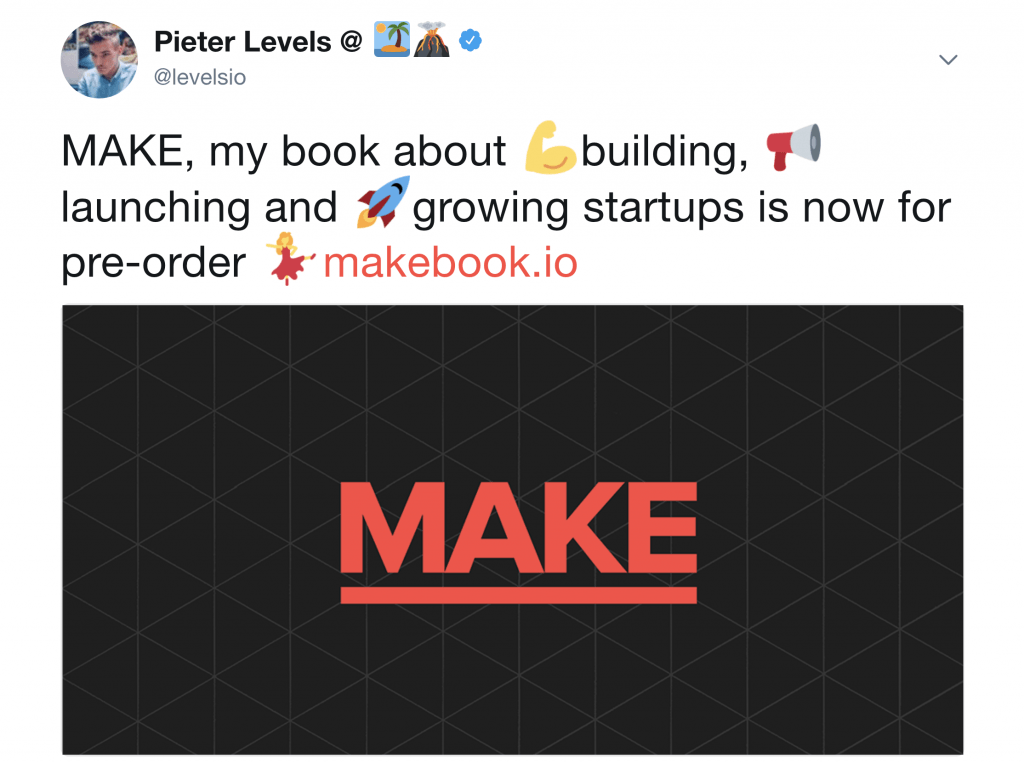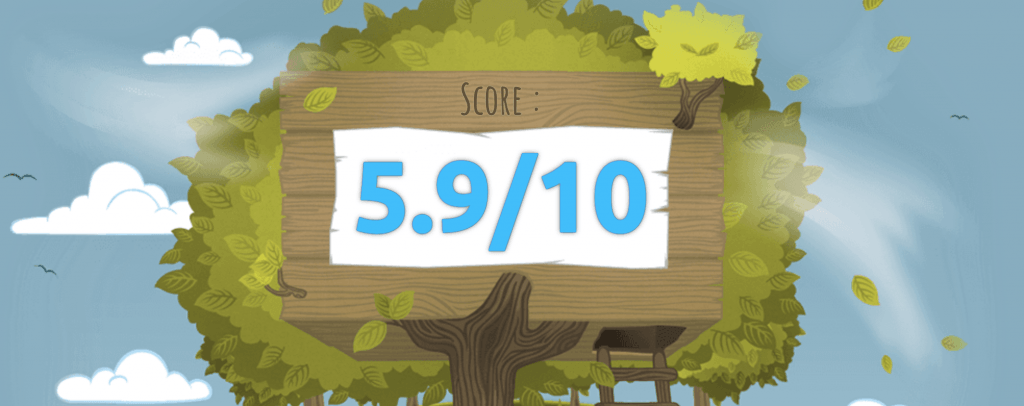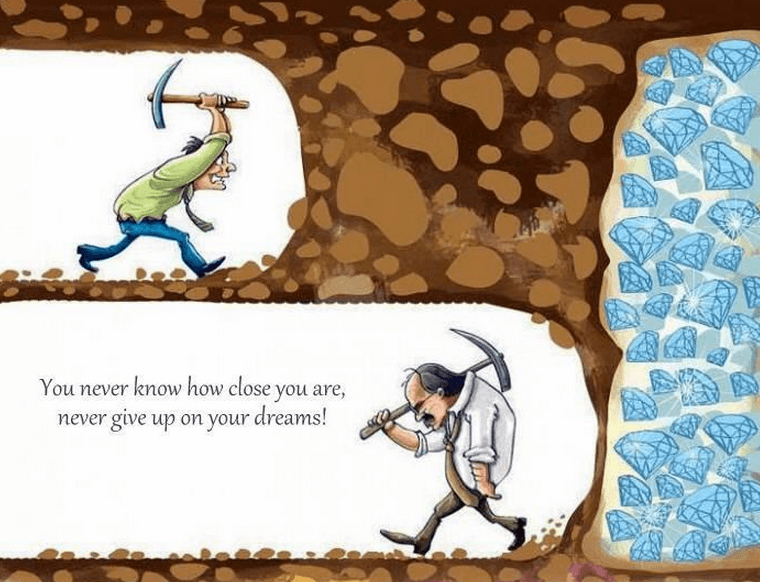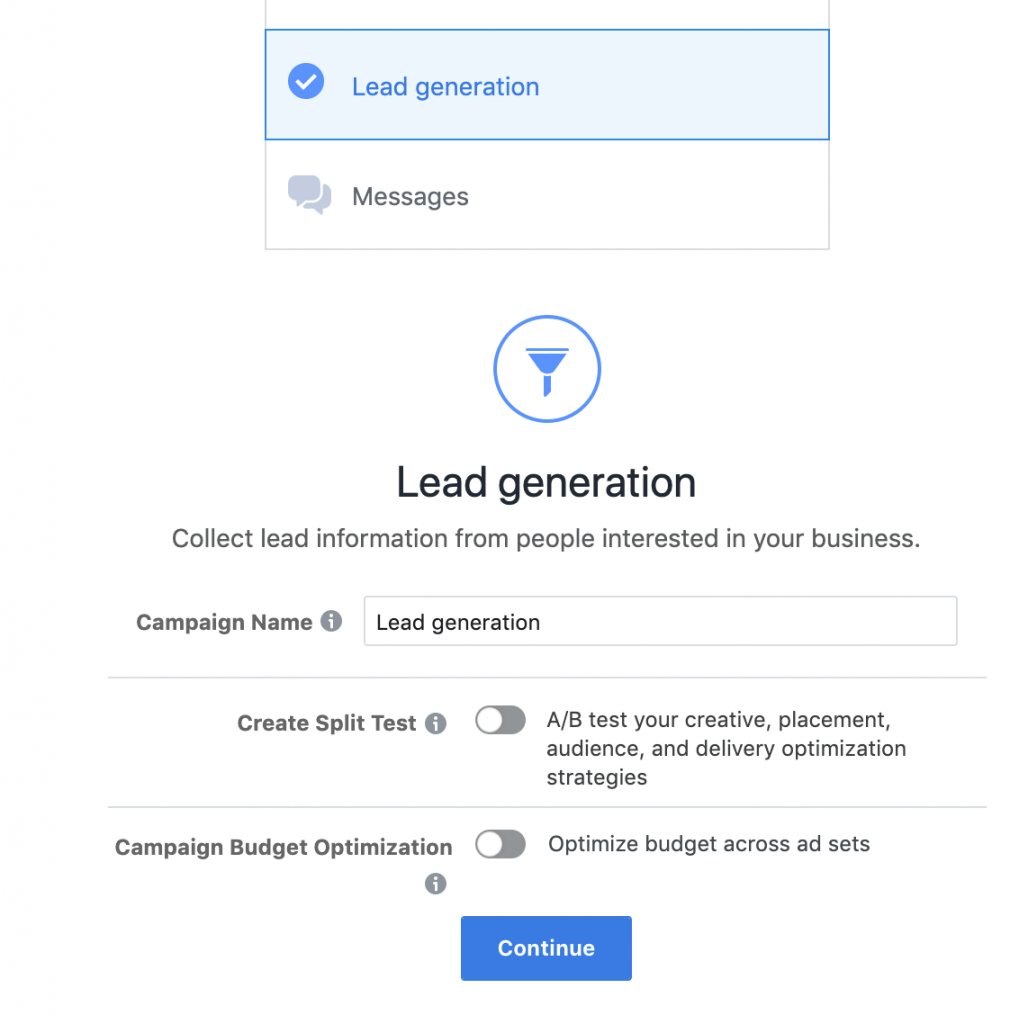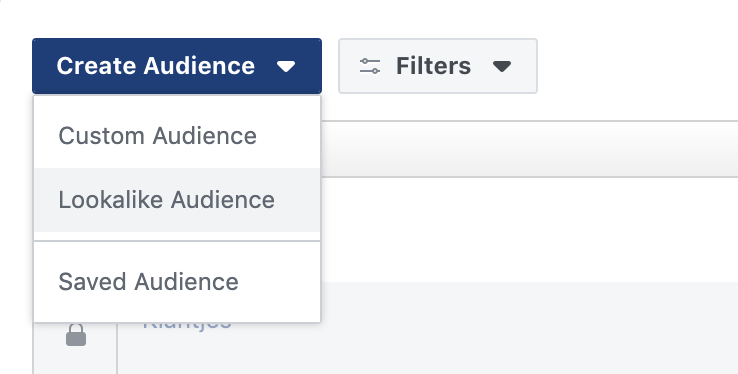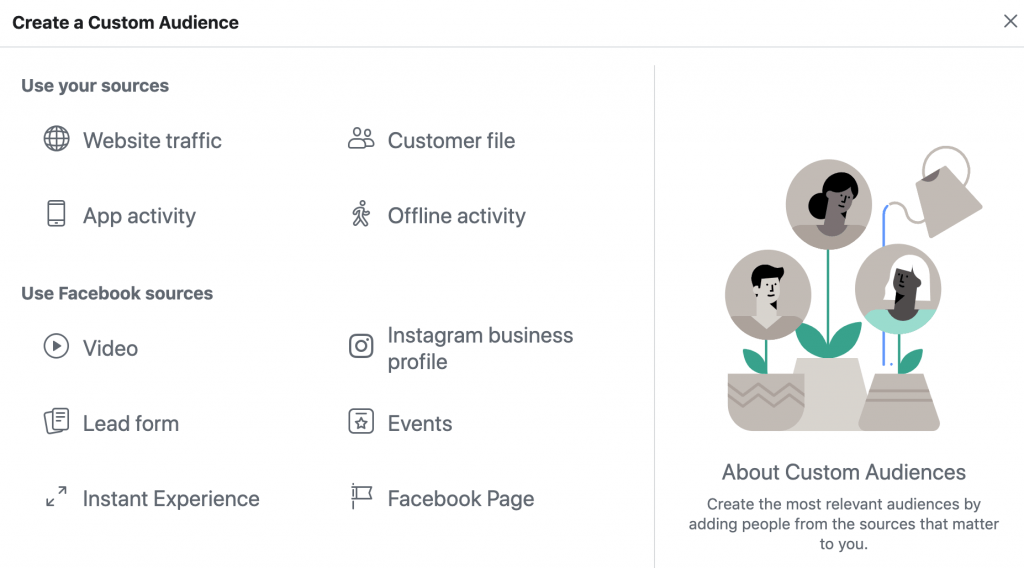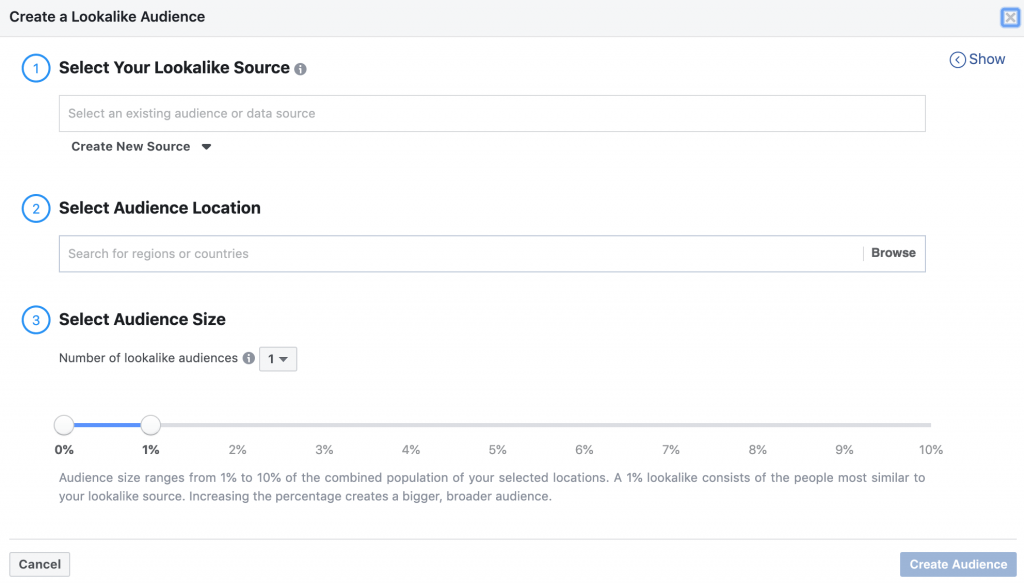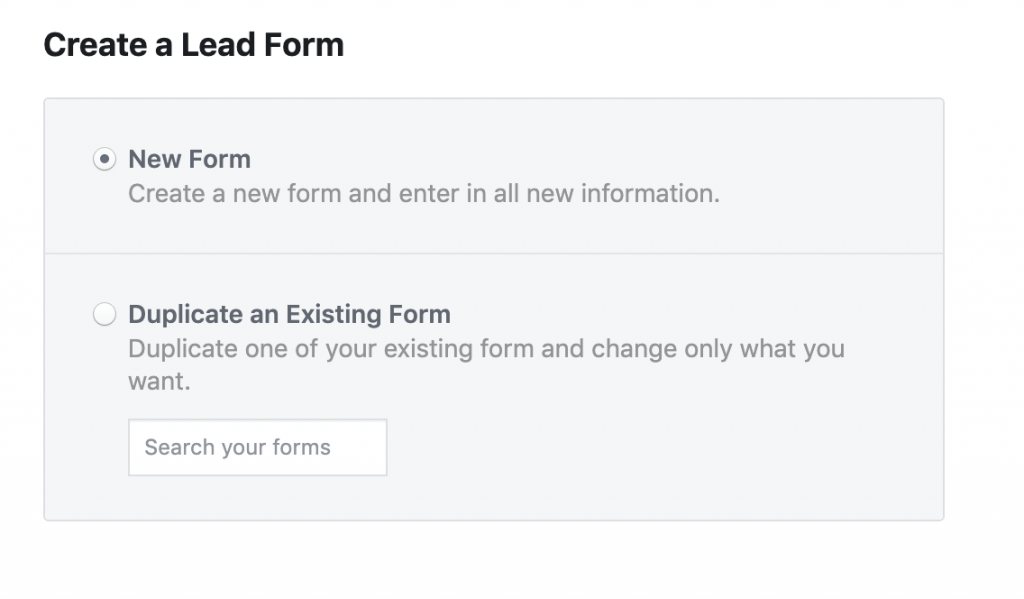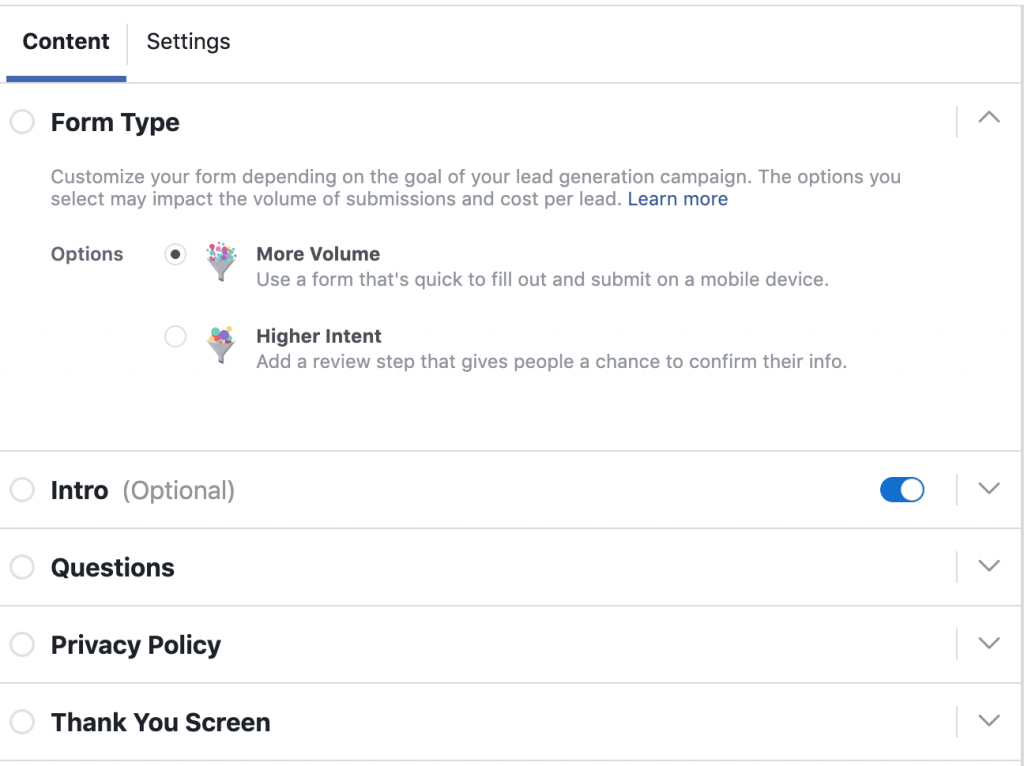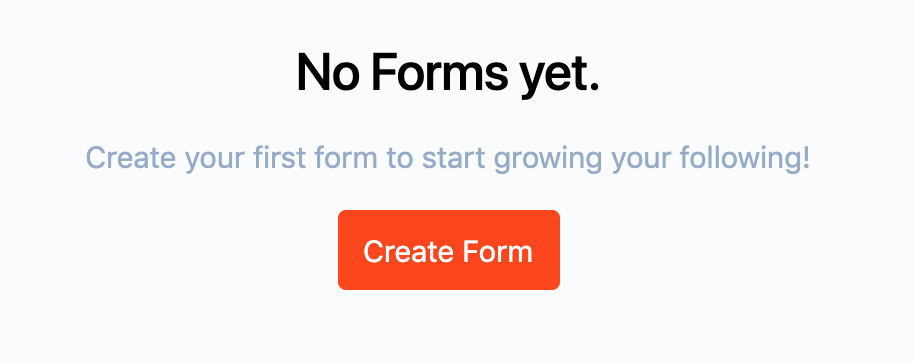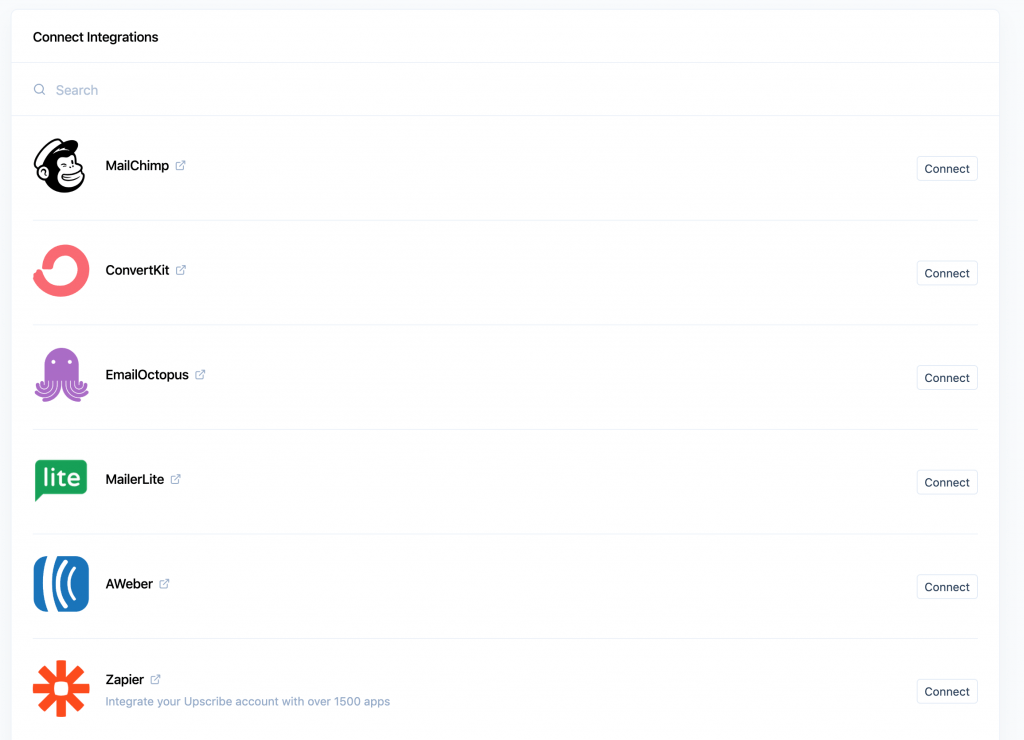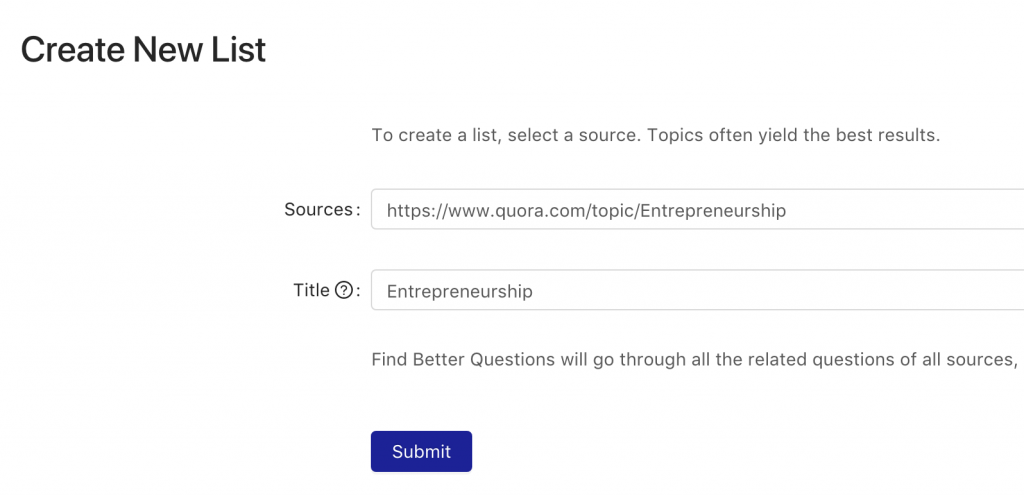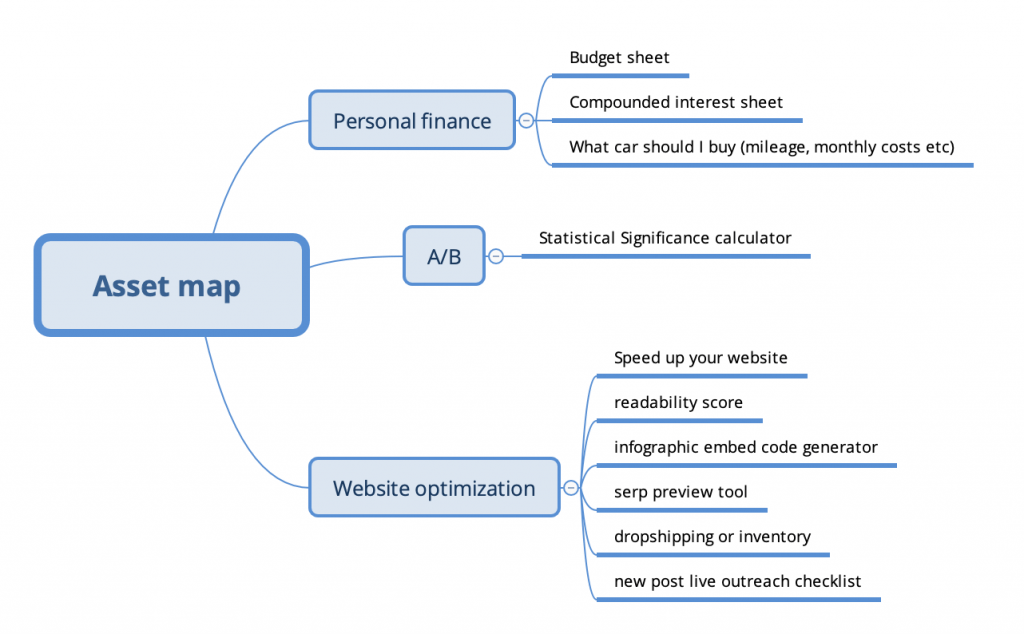In this blog post I focused on how to start a blog. In this one on how to get more visitors. The one you’re reading now will be about how to grow your blog depending on where you’re at! So choose the section that coincides with your blog’s level of monthly visitors. 90% of the examples I use are examples that you can use without paying any money for it. They are things you can leverage with your current blog or with “shared media” that doesn’t require to pay to play.
I want to grow my blog from 0 visitors to 500 a month
So I guess you just started out or have quite a bit of content yet but almost no visitors yet. You’re in the most shitty situation. You spent a lot of time building your blog / website but have nothing to show for it yet visitors wise. I have news for you. By now I’ve typed just under 40,000 words. Created about 5 or 6 in depth articles and have 0 visitors. Zero. None. But that was actually my plan. So I’m happy. I don’t expect any visitors because no one knows about this particular website. It’s part of my challenge.
So I’m in the exact same boat as you. Once I launch this website (it’s live, it’s already being indexed by Google, but no one knows I made this site) I want to grow my visitors very quickly. In the 180 days after I launched this site I want to have reached 180k visitors in total.
If you’re just starting out, don’t expect to rank in Google. At all. The web is so crowded that it will take a while before you get any numbers worth talking about from Google’s organic search. You can however immediately start getting visitors from Google’s Paid Search Ads. But I don’t want to spend money on my blog. I want to make money with it.
So, what to do, what to do. If you followed my earlier guide how to start a blog, you should’ve reached a total word count that exceeds 10k. If you haven’t created a blog with posts that account for more than 10k words, go do that first. Once you’re finished, read on. If you don’t know how, just follow my guide. It should give you plenty of options.
I think the most important part anyone who starts with something new is to know your audience and to create a loyal following. I have hundreds of websites and they all have different audiences. This blog has a different audience again. On my travel blog I focus on 18 to 32 year olds who don’t have kids and who want to see the world. On this blog I’m gonna focus on people starting ad the age of 16 up all the way till 50. Below 16 you should still be in school and you’re probably not thinking about your distant future. Beyond 50 you’re most likely not looking for new ways to make money. The best part of your career is over and you should be well on your way to become financially independent if not you should already BE financially independent.
This is my list of traits I focus on on this blog audience wise
- 18 – 50 years old
- English first (or second) language
- Above average interest in finance, the web or entrepreneurship
- Higher educated (College and above)
Now the problem at this point is… I’m just guessing. I’m making assumptions. Once you start getting visitors and they subscribe to your email list(s) you should ask them what age they are. Where they live. Etc. That way you can actually change your outcome based on facts and data.
I want to make 3 persona’s from my assumptive data. 3 types of totally different persons who could be interested in my blog. Based on those 3 persona’s I’m going to write all my stories and blogs. Only after I have enough data will I look and see if I need to change my writing style, channels used, stories, etc.
Persona 1: Steve Mercer (I always write a story about my personas). Steve is 22 years old. He just graduated from college with a Bachelor in Business Administration. He’s interested in economics, how the world works and he loves to play American Football in his home town Atlantic City, New Jersey (US). He’s looking for his first job in finance.
Persona 2: Mary-Ann Locke. Mary-Ann is a 39 year old housewife and married to John. The kids are in their mid teens and are becoming easier to handle. She can spend more and more time on things she enjoys. She wants to start a business of her own, but she hasn’t got a clue what yet. So she’s actively looking for some help and guidance in that field. She lives in the Greater London area (UK)
Persona 3: Pete Bannerman. Pete is 36 years old. He has 2 young children below the age of 5 and has a wife. They’re both entrepreneurs. Pete is a freelance consultant. His wife is interior designer. They want to optimize their income and maybe start a little hustle on the side. Pete and his family live in Santa Cruz, California (US).
I now know who I’m writing for. I can get in their heads and think what their want and needs are. What their current frustrations are. What their motivations are. Based on all that information I can make even more specific personas. I made one example so you know how to do it yourself.
Especially the motivations and frustrations will help you a lot. Make sure to do this for YOUR niche. For what you blog is about. For the audience you think (know) you want to target.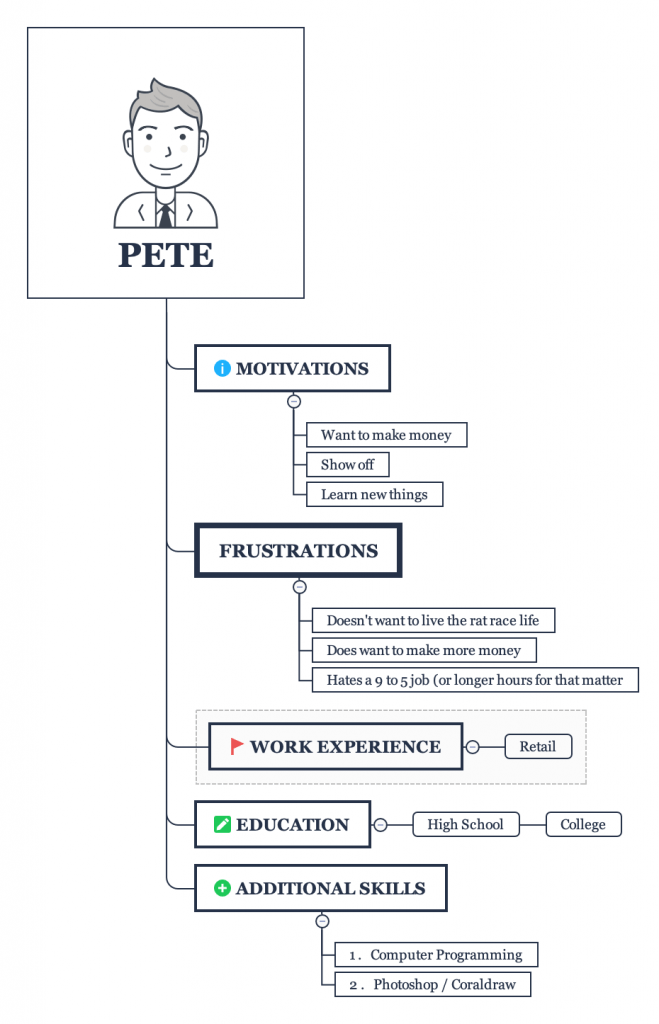
Now that you know what motivates and frustrates Steve, you can write about it. If you’ve already done so, great. We can move on to the next part. The actual getting more visitors part.
Add an email signature with your blog
If you’re starting from scratch your have to use the stuff you already do to grow an audience. Do you have a personal email address? Of course you do! Create an email signature with your blog url and why people should read it. Or add your last post to it.
Post your blog on Facebook
Ask your friends and family what they think of your new blog. What did they enjoy reading? What do they want to read more about? The people closest to you can give you great feedback on how to improve. They’re also very accommodating when it comes to sharing and liking your content. Make use of that!
Every time you post a new blog you should also mention it on Facebook. Not just the same time. There are 2 ways to do this… One is the automated way. I don’t really like that version. Install revive old post if you want to automate things.
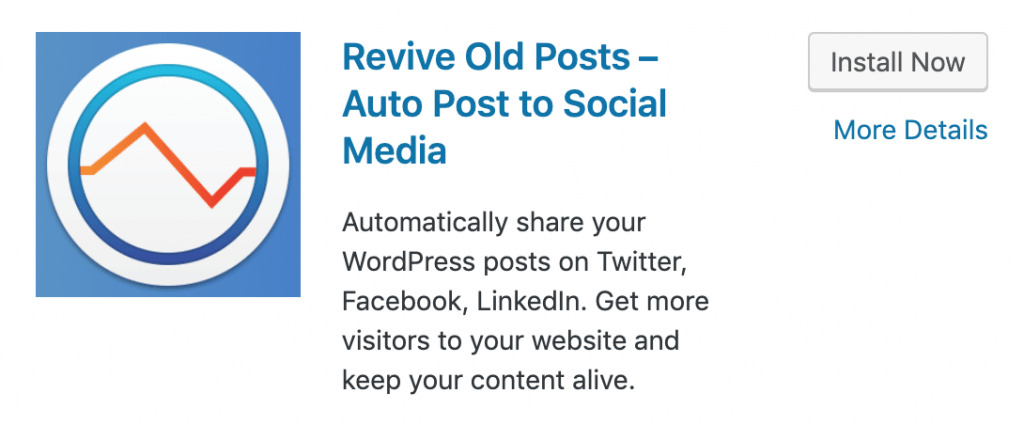
Every blog you create gets shared to the account you connect.
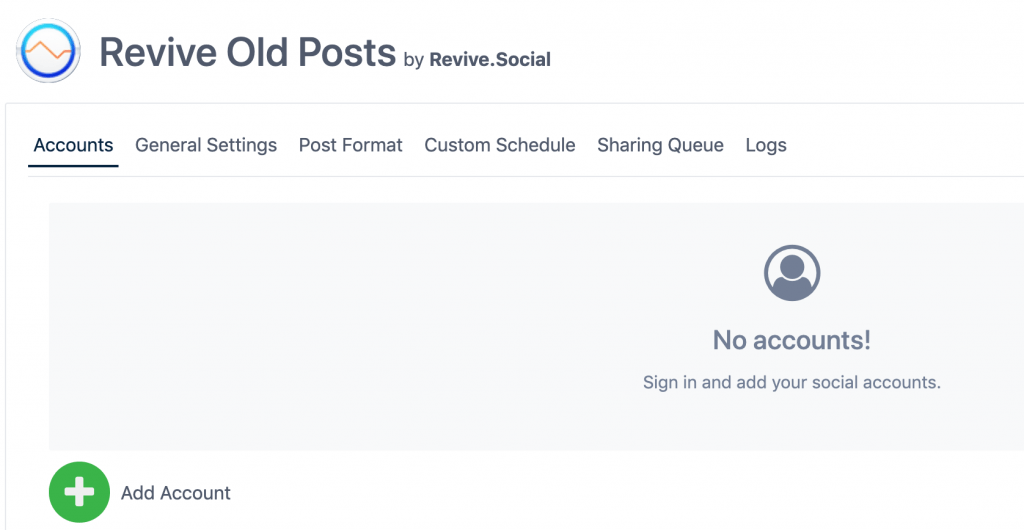
You can change the settings based on how frequently you post. If you post multiple times a day it might be wise to change some settings. I post once a day at most, so for me the settings don’t really matter.
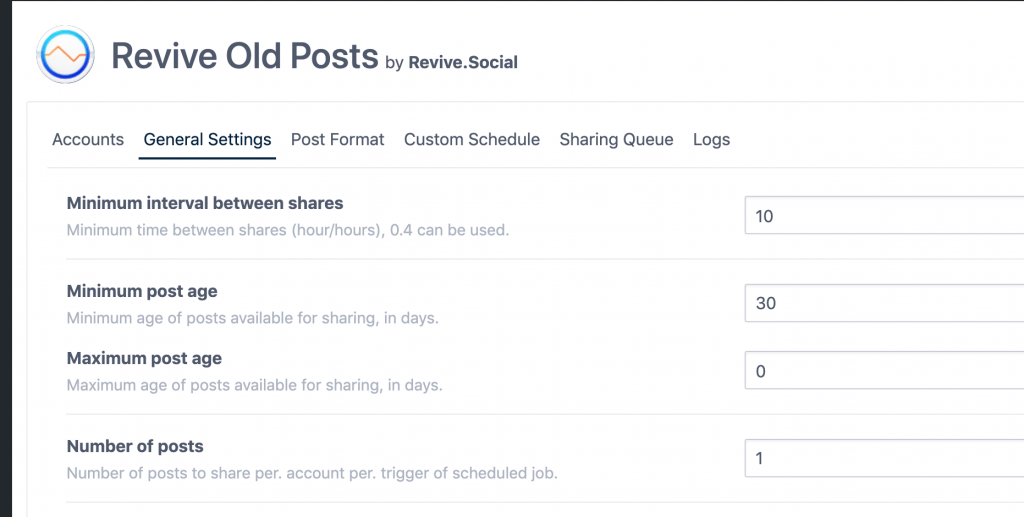
For this to work a bit better, you need to keep in mind to add a featured image to every blog post you put live. (And before you press the publish button)

If you don’t add an image to a blog, you’ll just have a silly little piece of text which is shared to Facebook or other social accounts. This is not a good example because it’s a link to Google Drive. You can’t really add pictures to it. But at least you can see what happens if you don’t a featured image to your blog. You get a lame icon at best in stead of an image that can really stand out in the feed.

Facebook (and other Social media) have changed their algorithms so external content doesn’t rise to the top so much. They give two reasons for it. One: people don’t interact with stuff outside Facebook a lot. These are usually “ads” packed in some form of a blog post. The second reason is because Social Media want to keep their audience on their platform. So you want get a lot of eyeballs on your content this way. Especially because you’re not thinking about how to post on what social channel. You just post 1 message to all platforms saying: here’s my message. Enjoy.
So my strategy is usually strategy number 2: Think of a way to connect to your audience. Your audience on Facebook is a lot different than your Audience on LinkedIn or on Twitter. People want to read different things. Their interests differ. That doesn’t mean you should write 3 different blog posts because you intend to share it on 3 different social channels. No, it just means you should make a specific message for a specific channel.
Create visuals you can post on your Instagram or Pinterest board with Canva.com. They have a great set of free visuals. You can choose ready made templates that take little work to customize. Try em out! You’ll increase the number of eyeballs you can reach dramatically.
Use the leverage of existing groups / platforms to amplify your content
People love great stories everywhere they go. A great story while also learning something is even better. So why not share your stories and knowledge on groups that are already interest in your niche.
Have you ever heard of Reddit? Reddit is basically a huge forum on all subject matters. Really absolutely anything can be found on Reddit. Some things are NSFW (Not Suitable For Work) others are funny, serious, work related, hobbies. Anything. So that means your niche is being talked about too. Take advantage of that. But wait, don’t jump in just yet. Reddit has a set of very specific instructions. If you want to survive on Reddit. Read this first…
Reddits playbook
Going on Reddit and just talking about yourself and your own blog posts is the quickest way to get you banned. I got banned even without doing that.
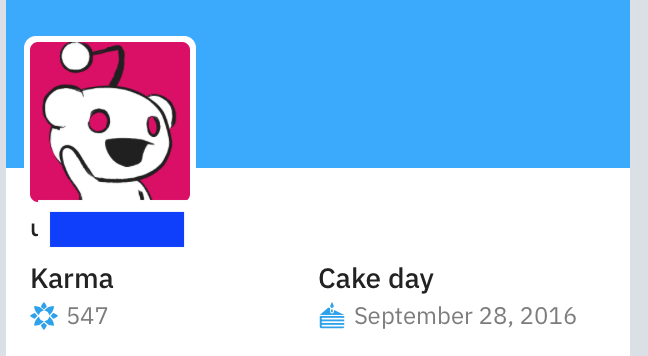
You should only start talking about your own blog once you reach a few hundred Karma. Karma is Reddit’s audience telling you you’re doing a good job. You’re funny. You brought a great topic or news item to light. You were helpful in the discussion. Stuff like that.
Search on Reddit for you niche(s). Subscribe to the channels that are closest to your niche. You can see the amount of followers has (before joining). Don’t join channels which only have a few hundred to a few thousand subscribers unless it’s really spot on. Meaning: I chose niche A because niche B was too small. But wait, niche B is actually a Reddit Channel. Than you’re allowed to join that channel 😉
Every channel has one or moderators. Get to know them. Read their posts and comments. Now have a look at the overall channel. What’s the vibe like? What are people talking about? What topics can you add value to? Remember: don’t mention your blog/business yet. Don’t make it about yourself. Make it about the OP (Original Poster) and the community. How can you add value to Reddit.
Start adding value. Don’t think about your own business until you reach at least 100 karma points. I got banned for 6 months when I had about 400 karma points. That’s (btw) still nothing in Reddit terms. There are plenty of people who have over 50k points. I asked a question which I knew the answer to 😛 Let me explain…
A couple of years back I was founder of a company which in short did stuff with plumbers and electricians. You could book appointments through our website with them. I asked a question like: If you hire a plumber, what do you think is most important? People started answering the question. It was a pretty popular topic. Until the answer: I’d like to book one now came… So I was sitting on the edge of my seat and I couldn’t keep my fingers from shutting down. So that’s when I answered: well we can help you with that. Click here. (Or something similar, but you get the point). The moderators thought my topic was so lame because I started it to get more business / made a trap where people fell into. I GOT BANNED. Bye bye… After about 6 months I sent the moderators a message. Telling them that I learned my lesson and that I won’t do it again… I got allowed back in the channel.
You can get banned from a channel but you can also get banned from Reddit as a whole. If you’re too spammy the moderators will just feed you to the sharks and you’ll lose your account for good. I was lucky because I made a mistake a few months before I got banned. I thought that was it…
It’s been a year or more since I last posted anything on Reddit. So I have to start from scratch again too. I just made a few comments and offered my advice on some topics to get back in the Reddit game. I have to divide my precious time to reach my goals I put forth in my challenge. I first want 100k words written on my blog in 30 days. That means writing 3333 words every day or I won’t make it. That’s lot of work. So I need all my time to make sure I make it to 100k words in 30 days. But I also said that I wanted to have reached 100k visitors 180 days after the website has been live / announced. That part is probably the hardest part. So I need to warm up my profile on other channels too. Just relying on my own strength and this blog will be a waste of time. I’ll get to 1000 visitors after 180 days probably.
I haven’t talked about myself on Reddit now. I’ve just offered help. I want to gain another 200 – 500 karma points before I start posting things about this blog.
Channels to follow on Reddit if you want to learn new stuff about running and to get inspiration for your own business
Here’s a motivator for you:
Don’t talk. Act. Don’t say. Show. Don’t promise. Prove.
or
If you quit now, you’ll end up right where you started. And when you first began you were desperate to be where you are now. Don’t quit. Keep going!
It’s hard to build an empire. Rome wasn’t built in a day. Just follow my lead and you can do this.
How to get visitors from Reddit to your site (being careful)
Once you reach a few hundred Karma on Reddit you can start to think about how you could maybe get a few visitors to your own website. I would still be very very careful here… 🙂 Find the right channel to do this. Be humble. You could do one of several things.
Strategy 1. Tell them about how you started your own business and that you could use some help to…. Tell people you just started out and if people could give you some advice. That’s not enough though. You need to tell people what you already done to get to this point. Why you started this business. Don’t be a lame lazy ass sun of a… Don’t just ask: HELP! Give people a story first. How did you start this business? WHY? Where are you stuck now? How can people help you?
Strategy 2. This only works if you put insane amounts of value in your post on Reddit. It should in no way or form look like self promotion. Most Reddit channels are very clear on this. But you can take it as a general rule of thumb. The primary reason you’re posting something is to add value to the community. The link to your website / asset should follow be just something extra if people are really interested.
With Strategy 2 it works best to tell a case study. Something you did and how it worked. What were your assumptions. What did you get out of the experiment? What can people learn? What would you do different? The 5 take aways. If you have your Reddit post ready, don’t post it yet. Leave a comment on this blog with your Reddit name and I’ll contact you. You can send me the post you prepared.
Even if you’ve created insane amounts of value on Reddit, you still don’t want to end with: subscribe to my email list. Visit my website to buy course X.
Leverage Facebook groups
I’m in a couple of Facebook groups that are strongly related to my interest. I learn new things in Facebook groups about Facebook advertising for instance. I’m sure there are Facebook groups out there that are in your niche which you can join. Facebook groups are a lot easier than Reddit. You usually have 1 owner who’s also the moderator. They’re a lot less harsh than the Reddit Moderators. You also don’t want to SPAM the group with self promotion, you courses and what not. It’s easier to supply the people in the group with value. You don’t have to deliver insane amounts of value before you have the chance of not getting banned. You can be a little bit more egocentric about it. Just a little.
Same goes here though… Comment first. Build trust first. Only then should you by creating your own (self promoting) posts. You can join groups that have clearly been created for commercial intent by the creator… Or that has a clear commercial intent. But you’ll have less luck there. Choose groups that are clearly not for profit. Only to share knowledge. Show them folks your knowledge and earn your seat as a trusted source in your niche. This will be the best route to take to grow your blog too. Do join groups with over 1,000 members. As a business owner you always should be thinking of where to spend your time on. Do you want to spend your time on a channel that could bring you one thousand eyeballs or one hundred?
These tips should get you on track to get to 500 visitors a month from scratch.
Create your first asset for linkbuilding and list building
If you don’t have any traffic yet, setting up email marketing is useless. No traffic means no subscribers. You’re better off putting your time in creating assets that will 1) improve the chance of getting links 2) once you do get traction and traffic it’s easier to have people subscribe to your list.
What’s an asset?
Could be as simple as a bonus tip you only give to people who subscribe to your list. A bonus tips you include in your content. Once I’m done with all me content. Meaning: I did my 100k words of writing, I’m going to check all my articles and see what bonus tips I can throw in “for free”. And what tips I can give when people signup to a newsletter funnel.
Could be an ebook or a white paper. A special case study. Anything that people are interested in and can motivate them to subscribe to your list or to link to you. If you have an asset behind an email subscribe you’ll get less links. If you have an asset on your website you’ll get more links but less subscribers.
I’m focussing on assets on the site itself first. I have no visitors. I have no links. I need traffic and links before I need people on my email list. Once the 100k words have been created that should be plenty for this blog to have enough substance for people to get value from it, start linking to it and for it to become “rankable”.
Thus creating the need for assets that people will like enough to subscribe for. I’m gonna call my email list my VIP list. Why? Would YOU rather signup to a newsletter or to a VIP list? That is an asset in itself. But a VIP list that doesn’t give you VIP status is an empty shell. So I need to add a bit of extra weight to it.
What does every entrepreneur that starts have a lot of? Time! No money. But lots of time. So every month I’m going to give away 1 hour of consultant for free to 3 subscribers. I’m also going to be real personal to the people who subscribe. They should feel like a VIP. Like I’m there for every single one of them. I’m going to personally help them succeed.
There’s also another reason I’m giving away free consulting time. I need to build case studies about people I helped and what it did to their business. Because one of the things I want to sell is my time. I love helping out other online businesses. I’ve been doing it for the past 10+ years and I still enjoy doing it.
The second thing I’m going to be selling is my courses. How to grow your blog. How to grow your email list. How to do conversion optimization to grow your business. For people to buy courses, they want to see what the courses did for other people. With the consulting I’ll be helping other people based on the courses I’ll offer. So I’ll be catching 2 birds with 1 stone.
Install Analytics Software
Before you can even see how many visitors you get, you need something that tells you 🙂 The most popular website analytics software is Google Analytics. Easy to setup on WordPress. Register for an account at Google. Add your web property. You’ll get a unique number.
Install the plugin below. Cleanest plugin to use. Click, click done!

I want to grow my blog from 500 visitors to 1000 a month
OK, so you started to get some traction. Your first organic visitors are dripping in. You’ve been posting your articles on Facebook and made some visual versions for Instagram and Pinterest maybe? On thing’s for sure though: you are ready for MOREEEE. More traffic. NOW. OK good. Read on!
You can’t influence Google’s algorithm. You don’t know what Facebook will change next. Those are all things out of your control. For your online business / blog to grow, you need to do stuff you can influence. And you need to do the stuff that should move the needle in growing your audience.
These 3 things are most important to grow your audience
- Increase the value you give by creating interesting content / introducing new products / etc.
- Reach out to people who might be interested in what you have to say
- Look at what works. Rinse and repeat
When you start your own blog or online business, there’s a lot you can do but only a few things that move the needle. Now that you’ve reached a few visitors per month, you need to check where those visitors came from. The only thing you should be doing is to look at what worked and how you can 2x – 10x that.
Plan your growth
Starting a business is hard. You have a lot of uncertainty, not a lot of money, you don’t know where to start, etc. So you need a guideline. Something that you know if you follow will grow your business. It’s called a plan. 😛 I can’t tell you what to do. I don’t know how much time you have to spend on your business. What I do know is that if you keep at it, you will see result. But what’s keeping at it?
- Post an interested article every day.
- Share it through all the well known social channels (with a channel twist added)
- Build a list of possible websites who might feature you / where you’re able to get a guest post
- Check your data. What articles were most popular, where did the visitors come from.
- Rinse and repeat the most successful channels and stories
I don’t know in what kind of business you are. I don’t know if your audience enjoys written content, visual content or video’s. Neither do you when you first start out. Don’t assume anything. Assumption is the mother of all f*ckups. You need to test all the most popular social channels. Only after trying for 1 – 2 months day in day out can you see with a bit of certainty what channels work best for you.
Once you know… Start to shift your focus to the channels where you see most traction. In the 500 – 1000 visitors a month it’s important to keep experimenting. But, I hear you asking, there’s so much… What could I try?
The basics are this: native content always give you more eyeballs. You’ll get 25% to 1000% more eyeballs on your posts if you post them in the native form that the social platform offers.
What you can do on LinkedIn to get traction for your blog
On LinkedIn you can write LinkedIn Articles with their publishing suite. Articles written on LinkedIn get a lot more views than if you just link out to your blog post. Try to create engagement through native articles and offer additional value on your own blog. So you need to plan a little what you’ll tell in a LinkedIn Article version what you’ll offer on your own website.

Could be as simple as a … continue reading link. A content upgrade. List 5 key takeaways in the LinkedIn Article and mention the rest of the top X on your blog. Giveaway something on your blog.
The common denominator on all social platforms, everywhere really, also in real life is: tell a compelling story. Don’t advertising your crap. Don’t tell people you have a new post, new product, new whatever. Tell people what impact you made. Always keep in mind to give value to your audience. Always keep in mind that they’re thinking “WIIFM” (Whats In It For Me) a few seconds after they start reading and a few seconds before they click the “continue reading” link. If you don’t give them a reason and only SPAM people with your crap, you won’t get a lot of eyeballs.
LinkedIn, as any other social networks wants as much engagement on their platform. The longer you stay on, the more ads they can show you, the more money they can make. So you have to work with that.
What I usually do on LinkedIn is do a 3 step strategy. I post a compelling story and ask people to comment. I usually get 10,000+ views on my post in the LinkedIn Feed. Next I’ll go in depth on that post with an article. I’ll inform the people who responded to my earlier post about it. That immediately creates more interaction with my article. More interaction means more eyeballs. In the article I’ll link out to my post on my site.
Try and experiment what works for you. This is the post I made on LinkedIn announcing my challenge. (I’m behind schedule btw :P) 17k views, 100 likes, 72 comments. Pretty good!
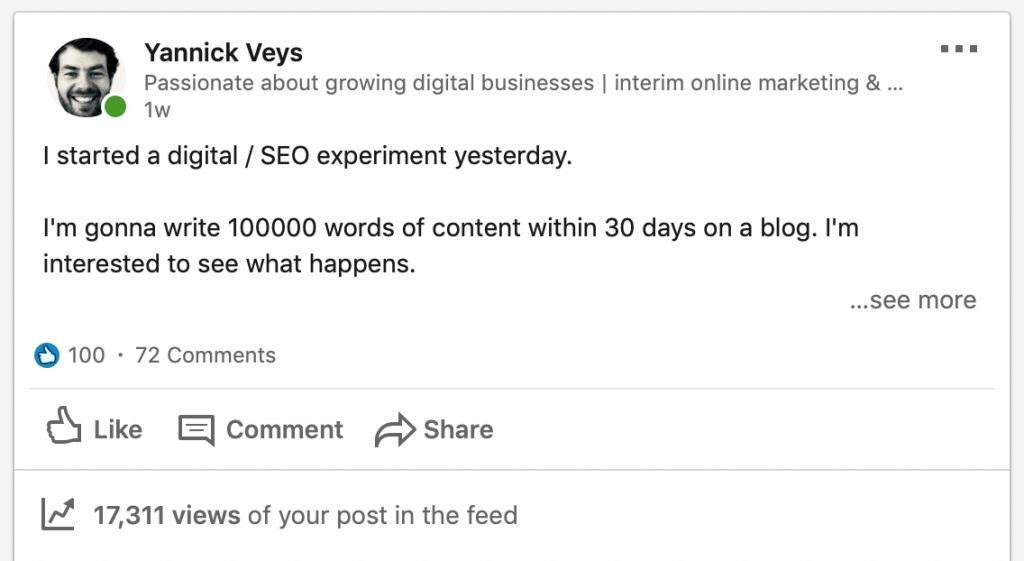
What you can do on Facebook to get more traction
Facebook live is probably the most compelling thing on Facebook right now. Never heard of it? It’s the Live video streaming service. You just click start recording and your feed is being pushed out there. People love the fact that they can have a look in you world. Uncensored, uncut. Raw. It gives people the feeling that they really know you. Almost as being friends. If you do regular Live events people will see you as part of their life.
I must admit I have never don’t Facebook Live. But a part of this Blog is showing you how stuff is done. So I’m definitely will do some Live shows on Facebook.
The things that I’ve seen that work best is when you announce your Live show. Tell people what you’ll be talking about and ask them to have some questions ready. I’m first gonna build a following before doing Facebook live. I’m going to start a private Facebook group once this blog gains some traction. Once the group has 1k users I’ll start my first Live shows.
I’ll go more into Facebook Live in the “Grow my blog from 5k to 10k” section.
If you haven’t already started your own Facebook Fan Page, you should. That’s a small step towards continuously reaching more people. Do keep in mind though that your Page’s reach is tiny compared to your own (personal) reach on FB. And by tiny I mean: if you have 1k friends vs 1k followers for your page, you’ll get a lot more eyeballs on the things you post privately. The basic reason is that Facebook has seen that people just don’t engage as much with Page’s as they do with people. It’s also a great way to make money for them. Brands want to keep communicating to their followers and now they have to pay (more) to do it. I have a couple of Facebook Pages (on with over 10k followers) and if I have an interesting post I always boost it a bit with some cash. It costs me less then 3 dollars to 20x the reach on it. Not a lot of money to get so much more exposure. That’s also the one concern I have and a warning for you: once you start your page you have to keep giving you followers engaging stories and you should be willing to spend a few bucks.
That’s why I also mention the Facebook Group. The reach in Groups is so much higher vs Pages while for small business owners and blog owners it is an excellent tool to reach your audience and to create a loyal following.
Fill up your calendar with things that move the traffic needle
I write 2000 words each day minimum. (I have a bit of time right now). I post an article every day. Posting == needle moving. I know for every post I create I will get more traffic. The value people get from my site will grow.
You need to fill up your calendar with stuff that moves the needle. You don’t have the time? Of course you do. You just choose not to spend it on things that move your business needle. You need to make choices to get your business running. You need to spend time on your business EVERY SINGLE DAY. A business, even an online business or a blog or whatever, is not a get rich quick scheme. It takes a lot of hard work. Day in, day out.
Use your research time to create an outreach list
When I’m creating a new article I’m also checking out what others are doing and what they’re not. How I can differentiate myself from the crowd. When I do research I check the SERP (Search Engine Result Page). I check what titles I see for my search query. I check the date the article was published. I try to determine if 1) there’s a gap I can fill 2) a guest post opportunity. I make lists of urls in a Spreadsheet and I bookmark pages.
Once I click through I look at how many shares this article received. How in depth it is. How many words it contains. What kind of examples they use. I try to make a judgement wether everything has been said about this topic or that there’s still room for me.
If I see a really outdated article I’ll add the website to my outreach list. A 3 year old article about social media marketing might as well have been written in the 1900’s. That’s how quick things change these days.
Encourage your audience to share your content through social media
With the 500 visitors a month you can make a start to let your readers do some work for you. Everyone has share buttons on their website. Not everyone has in-content share buttons. Most shares happen because people want to show off. Look at me. I’m smart. I found something great. Hey, look at this insight I got. So besides adding the social sharing buttons that show up above, below and besides your articles, make sure you also have in-content share buttons.
You can use something as simple as Click to Tweet to increase your social sharing rate.
Asking people to share things from your blog will increase your share ratio by 20% - 30%. Share on XYou’re making it easier to share a great insight. You’re making it easier for people to look good.
Use a Pinterest plugin to encourage sharing if you have a very visual niche
The plugin will show a Pinterest logo on your images automatically. You don’t need to do anything else besides installing the plugin and activating it.
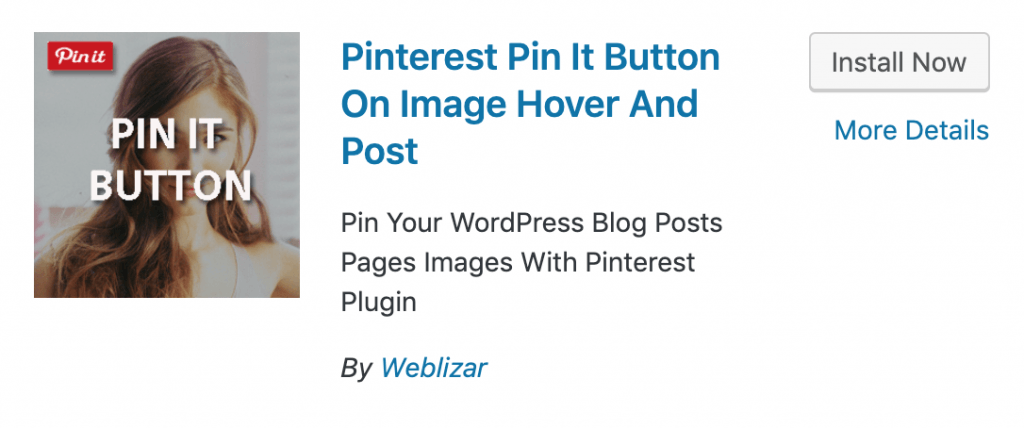
How to get your first guest blog opportunity
As of this writing I’m still at 0 visitors. (Blog isn’t launched yet :)) But I already wrote about 44,000 words. For a 5 year old blog that’s nothing. FOr a blog that started 2 weeks ago thats quite an accomplishment (I only care about, my visitors don’t btw). Writing content is pretty easy for me. So I should be able to get a guest post opportunity somewhere, right? Well, not without the right preparation.
I’ve been building this blog for 2 weeks now. Not long. But I’ve already compiled a list of about 100 websites where they have similar content to mine, outdated content, accepting guest posts, etc. etc.
But if you have no name, no traffic, no “DA” (domain authority), it will be pretty difficult to get a guest post opportunity somewhere. I do however have one asset that I think some blogs will be interested in. Time & knowledge.
There are a lot of websites out there that focus on building a business. Growing a business. Self improvement. Stuff like that. They want something special for their audience. So I’ll be giving away my time to their readers. To THEIR readers?? YES! I don’t have any yet 😉 So I need to give stuff away for free so I can build a name and get traction with SEO.
You can do the same thing. If you just started with your business, there’s one thing you should still have plenty off… Time. If you also have a bit more knowledge than average about something… You can offer that to websites that are in a similar niche or niche which is closely related and give away your time and give advice to the readers from those websites.
You should be actively building relationships
Linkbuilding, if done the right way, is done purely on a basis of relationships. You don’t want to build low quality blog comments, directory links, etc. Make a list of a 100 websites in your niche that you think you could one day get a link from. Follow their editors. Start commenting on their blogs. Retweet their Tweets. Become a real follower.
If you are a bit more visible on their platform you could try this: create a prequel or a sequel to the blog post they just created. Create it as soon as you see an interesting blog on their site. Something which is relevant, you can add to. Be positive about their post. Link to their post in your blog. MENTION it on their comments as soon as you’re finished. Timing is everything here. People read the first 5 comments but they don’t read the last comment. So you have the chance to get more visitors and to be seen by the blogs editor(s).
I want to grow my blog from 1000 visitors to 2000 a month
Ok, so your needle is starting to move in the right direction? Great! you’ve reached about a 1000 visitors a month now? Or at least you should when you follow all the tips I mentioned above for 1 – 3 months. Let’s see where you’re at now.
It starts to become important to track your output and what it does with your needle. Are your rankings going up? What traffic channels are performing well for you? You should be seeing clear differences between different channels. It’s now a good time to start to increase your efforts on the channels that work and decrease your efforts on the channels that don’t move the needle.
Setup rank tracking if you haven’t done that yet
I use Wincher. Few bucks a month. You get instant results when you enter your keywords. So within minutes you know where you’re ranking in the most popular search engines. This is how my rank tracking is going with a website that’s not officially live yet 😛 Hahaha. 100+ on everything I’m tracking (just how it should be)
![]()
You should have at least 50 – 100 keywords you’re tracking. I’ve only been at this website for 15 days (just creating content and doing nothing else so far). You probably already took several months to get to a point where you receive 1000+ visitors a month.
If you see any keywords that are ranking top 10 but not top 3 just yet, those should be your targets for linkbuilding. With a few links you should be able to get those url’s in the top 3. Besides doing the linkbuilding, check how you can improve your search snippet.
Besides rank tracking, make sure you activate search console for your domain
Google Search Console gives you a lot of great insights on how your website is performing. If you want to enable search console for you domain you need to at least be able to verify it through one of many ways. Either through the fact that you use Google Analytics, with an html-file you ftp to your server. With a meta tag you add to you <head> of your html. The most sophisticated way is by adding a txt record to your dns settings. Doesn’t really matter how you do it.

Once you enabled Search Console for your domain you normally have to wait a day or two for Google to grab all your data and show it. I always find the most interesting tab to be the Performance tab.
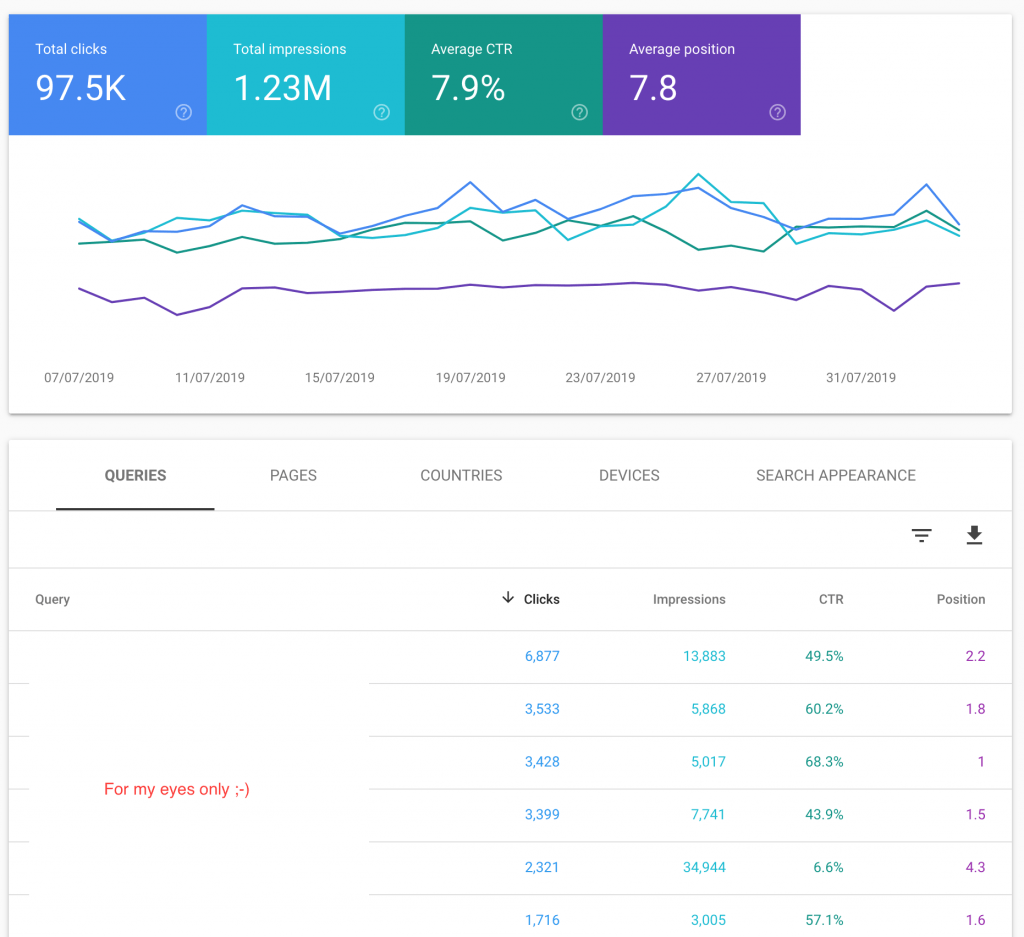
You can click through on keywords or pages. See for what keywords a certain page ranks for. How high the CTR is. Did you see how much of a difference rank 1 vs rank 4.3 makes? 60 percentage points difference. But don’t be fooled. If there are a lot of ads on a page, rank 1 will have a significantly lower CTR. If there’s a #0 (Answer Box) result CTR overall will be a lot lower. There are lots of factors that play a role in CTR in search. So when you see some numbers that don’t add up. Do the search yourself (in an Incognito window) and see what the SERP looks like. The way the SERP is structured should tell you a lot about what CTR you can expect.
Optimize your SERP snippet to gain CTR and RANKINGS
If your CTR is lower then you’d expect you should look at your SERP snippet. Is it as enticing to click on as the rest of the results? Can you improve your snippet so the CTR rises? If you can (and you should continually test this by the way) your rankings could also increase. Google looks at the relative CTR your result receives. If it’s lower than you’d expect for the ranking, you could drop in ranking. If it’s higher than expected your could see your rankings increase. Tweak your Title. Tweak your description tag. Make it relevant (again). Update your titles to show that you just updated your content for August 2019. Or [New tips added]. Anything that can entice more people to click on it.
Check for crawl errors
If Google’s spider has trouble accessing your website that could potentially hurt your rankings. So if you enable Search Console you’ll also gain insights into what problems your website might have that are hindering Google. Check the AMP tab if you have the AMP plugin enabled to see if there are any errors. Some theme’s or some plugins can break AMP which hurts your mobile rankings in Google.
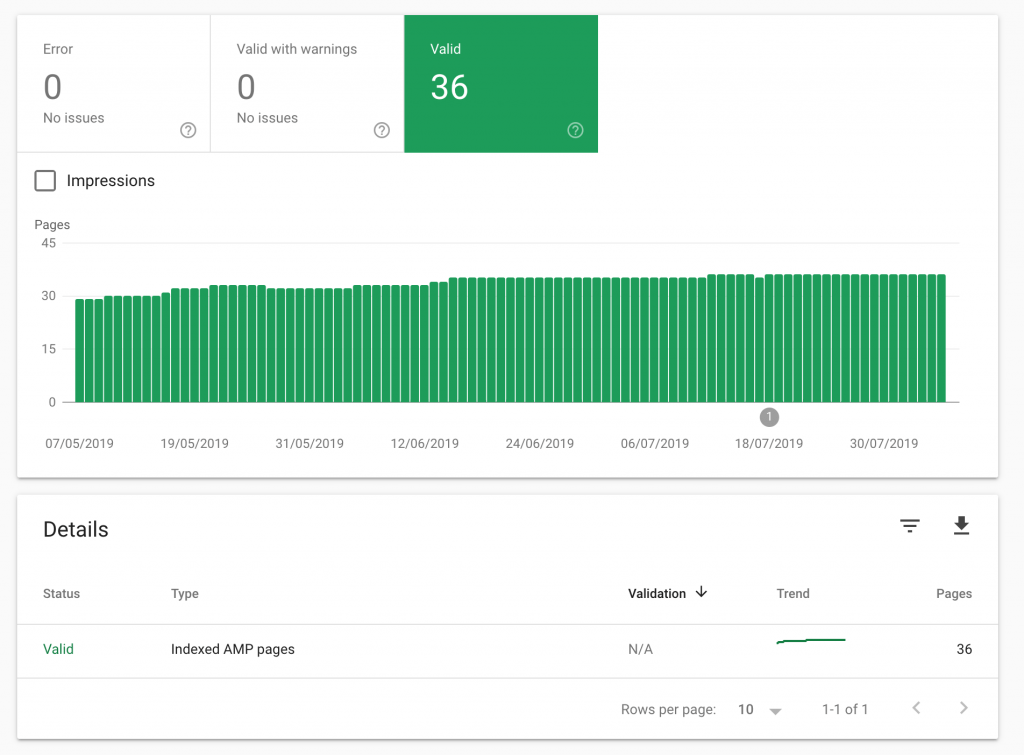
If you see any errors you should also see the errors in your AMP plugin on WordPress. The quickest way to get rid of these errors is to install a different theme and/or remove plugins. Check the errors and see if you can figure out where they come from.
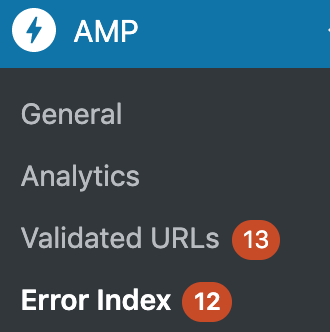
Find more relevant keywords to make more content
Do you know Answerthepublic.com? I love that site. Type in a keyword that’s related to your niche and find out what people are looking for surrounding that keyword.
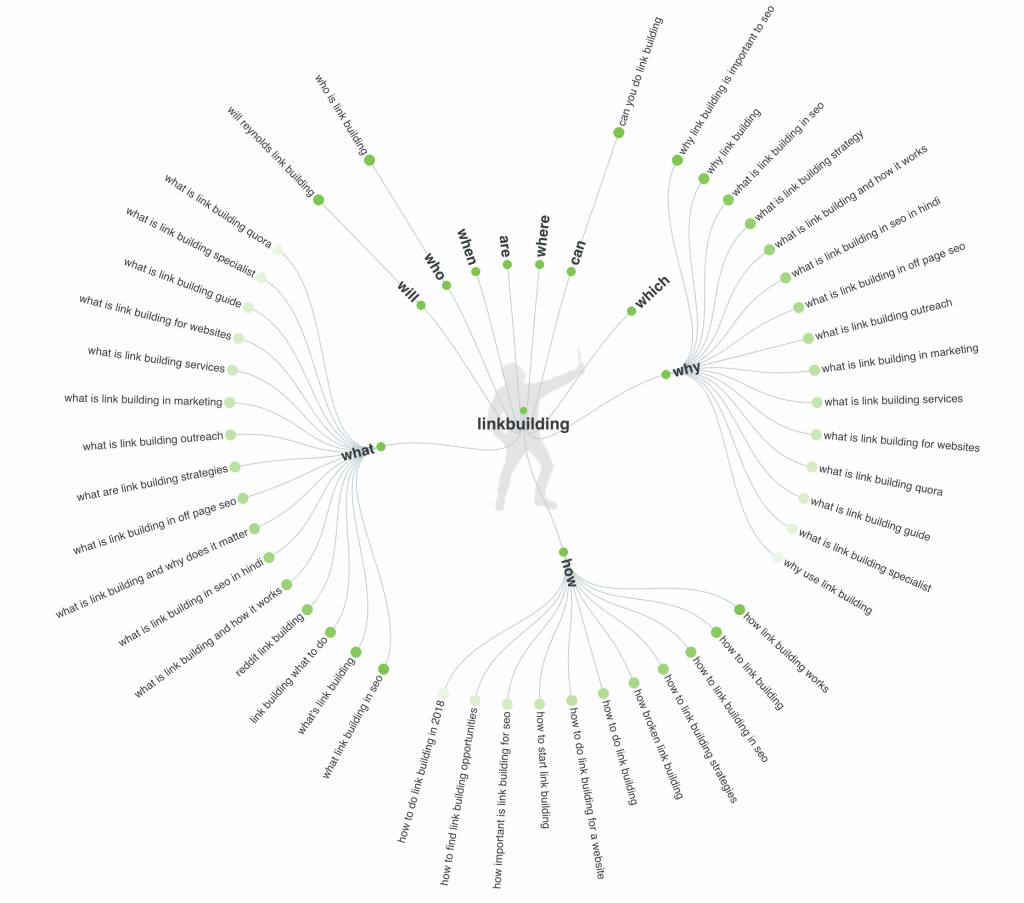
You should go at it for at least 50 (broad) keywords and see what comes up. This is a goldmine for getting new ideas to write content about. The broader (head type) keywords give you more alternatives vs the more long tail (longer) keywords. So start with single word keywords and increase along the way.
You get prepositions like the image above. But also comparison based queries. And a whole list of hundreds of keywords you can use.
3 years ago I would’ve told you to build a page for every query. These days my advice would be is to bundle as much related keywords as you can into one page.
3 – 5 years ago if you typed shoe vs shoes in Google you’d get different results. That’s strange of course because what’s the difference between the two? Google could already tell the difference between Hilton Paris and Paris Hilton related search queries but they weren’t as smart to show the difference between shoe and shoes related queries. These days they are. And longer form content is preferred above 500 word pages which focus solely on one keyword and are primarily created to rank in Google. They’ve cracked down on that a lot. So I don’t create a new page if I don’t think I can write at least 1000 words of content for it. Preferably more than 2000+ words. This blog post is at about 7000 words right now and far from finished. I’ll probably reach over 10,000 words before I’m done.
Another important factor to rank higher is website structuring. I make really big articles about broad themes and generalize a bit more in those. From those pages I link out to and create new more niche pages about things I talked about in the big/broad page. The niche page will have at least 2000 words. The big “mother” page will have at least 6000 words. If peoples’ queries are more broad Google will show them the “mother” page. If they are more niche, more long tail, Google should show the other (smaller and more detailed) page.
I’m organically creating my “site structure”. I start working on one article and it grows and grows. I then see that I’m not being in depth enough about a topic so I add it to the site structure so I know I need to create a new post for that topic and be more in depth.
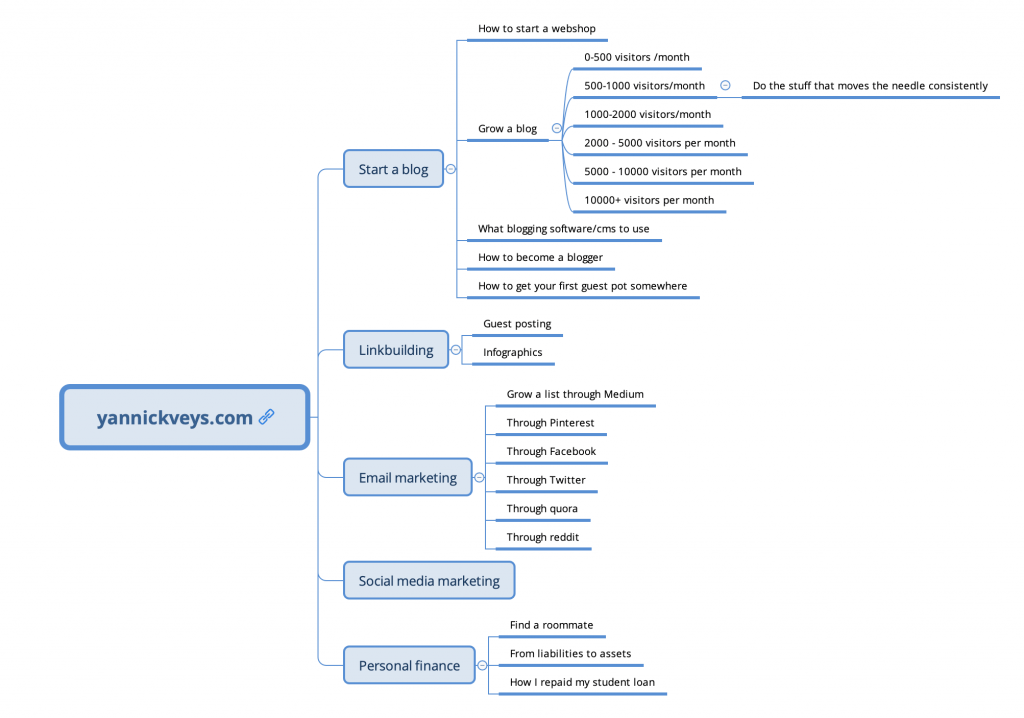
I can write a big article on linkbuilding (which is above 5000 words right now but still needs to grow to more than 6000 words). And create child pages where I go in depth on a few topics I discussed in the mother page for example. A detailed guide on how to build links with guest posting for example will be one of my child posts.
Double down on your email list and don’t forget to email great content
When you reach 1000 visitors a month you should also start to see some real traction with your email list. If you optimize your forms, your content upgrades, have the right email magnet assets, you could get a 1% – 10% conversion to email subscribers. That’s anywhere from 10 to 100 per month.
I use Sumo as a WordPress plugin to increase the number of subscribers on this blog. You can use their Welcome Mat, a floating bar, an inline form, etc. etc. The problem for me with my other websites isn’t the part where I fill my list with subscribers. It’s with emailing them interested content.
So for this blog I’m going to create great resources that I can email before I start collecting large number of subscribers. I don’t want to fall in the same pit I fell a few times before 🙂 Having a lot of subscribers who don’t have any interaction with my blog, who quickly unsubscribe because I fail to engage them and give them value from their (free) subscription.
I’m going to make 2 resources. 2 ebooks. The first will be about how to start an online business. The second one will be about growing it. My best tips will be in those ebooks. I will both use them as a subscribe magnet and as a way to increase loyalty and trust in me and my emails.
Don’t email your audience for every little thing you do.Only when you’ve published a great resource that’s of interest to your list, email them. The better you split your list in relevant groups, the more relevant your emails can stay. So make sure you post relevant content at least once a month. If you email your audience less than once a month, you can might as well quit email marketing.
Create drip campaigns
Whats a drip campaign I hear you ask? It’s an email campaign where you create 3 – 10 emails and put them in a sequence. It’s a way to build trust and to keep your readers engaged. You could make a course and add it to a drip campaign. Send an email every day for 10 days in a row. People who open them all are your most loyal followers and are also most interested in what you have to say. You might be able to “upgrade” those readers into a paying course or subscription. That’s also what I’m going to do with my lists. My courses should be a logical upsell to my list subscribers.
A drip campaigns is also easier than sending emails with new content to your subscribers because it’s automated. You just create the emails once and keep sending them to new subscribers over and over again. It’s an asset. It saves you time. It creates a loop of visitors to your website and it should increase your total visitors per month.
If you’re in a visual niche this is how you can grow your Instagram followers
Wether you’re in Food or Travel or Apparel, you’re in a very visual niche. The better looking your website and pictures on your Instagram the more people will follow you and the more you’ll be able to grow your blog.
There’s still a universal truth which you also have to use for food or travel blogs. Tell stories. You can post the most amazing pictures. But if you don’t have a story that resonates, you won’t get a a lot of followers.
There’s a big difference between showing people where you visited and what your story of the visit was. So before you make a dish or decide on your new travel destination, create the story first.
This is what you do when you have like 3 followers on Instagram and already posted 20 pictures
- Follow other people (hopefully they’ll follow you back)
- Comment on other peoples pictures
- Use popular # hashtags when you post pictures
- Rinse and repeat
If you don’t gain any followers with this tactic, I’m sorry to say this but, you’re Instagram profile sucks, your pictures are hideous and you can’t make a connection with your audience.
I want to grow my blog from 2000 visitors to 5000 a month
You’ve got some great traction already. You might be able to live off your website or you’re breaking even right now. With these tips you’re gonna make a profit for sure.
Be specific to your audience
Thats not a really specific header is it? What I mean by that is if you tell your audience exactly what they can expect you’ll get more engagement. Let me give you an example. For what newsletter would you rather signup to:
- Signup for our newsletter and increase your traffic
- Signup for our newsletter and increase your traffic by 20% in 21 days
I’m guessing the second one. You know what you’re getting. The risk for you is lower because you can make a little calculation in your head: is 20% gain in 21 days worth something to me? Do I want to go through the trouble of subscribing to a newsletter if I have this to gain? While on the other hand when I don’t say anything about how much growth you’re gonna get, your mind will play even more tricks on you. That leads to more indecisiveness which leads to less signups for me.
Every blog post / email / social post should contain these 4 items:
- Something to feed your audience’ ego
- A paragraph that connects to your readers life
- Empower your reader
- A CTA (in first person)
Don’t spray and pray
You should have dozens of high quality blog posts now. Outreach should be a daily activity for you. When you’re doing outreach, never send bulk emails to ask people to link back to you. It does not work. There have been quite a few studies of spray and pray vs targeted outreach. Targeted outreach outperforms spray and pray 100:1.
For every 100 targeted emails you send out, you should get between 5% – 10% of links placed. For every 10,000 emails you send out to random websites you’ll be lucky if you get 8 links placed in stead of 500 to 1000 links placed for targeted outreach. That can be the difference between receiving 0 visitors a month and receiving thousands ands thousands.
Replicate your competitors links
If you can’t beat them, join them (in their strategy). They might have a 10,000 Dollar a month firm building links for them you could replicate for a fraction of the cost.
You do need some tools for this to make it easy for yourself. But I’ll show the free route first. This will take a bit more time though.
If you search for “competitor name + news” or -site:urlfromyourcompetitor + brand name competitor you should be able to find quite a bit of mentions. Those might not even be links. But you’ll see where they popup and what websites are interested in writing about your competitor. If they’re interested in them, big chance they’re also interested in you.
Change the period that Google will search for different strategies.
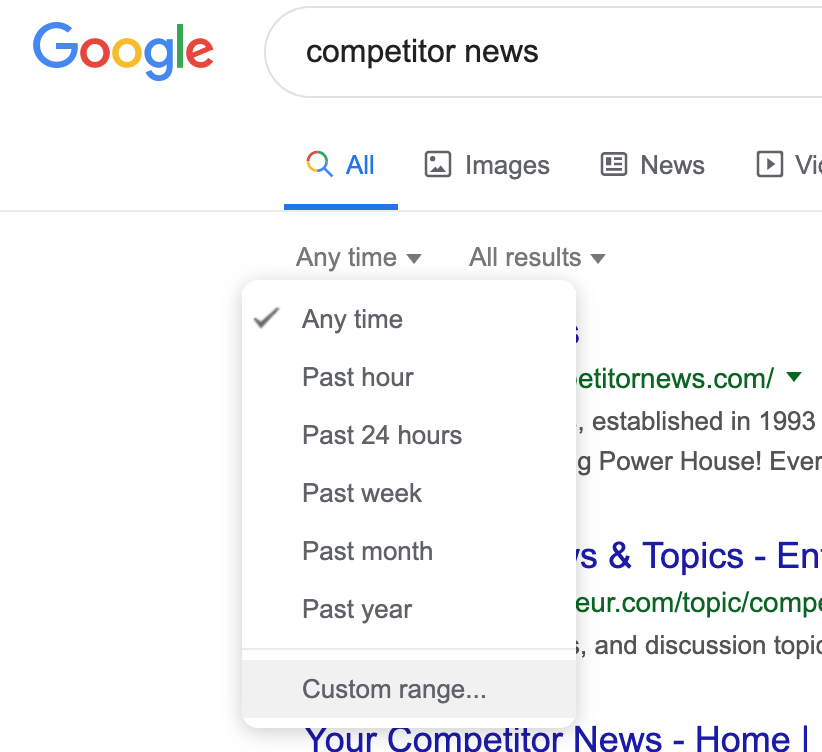
Put it on the past week to past month to see if you can add you name to the article as another resource. It’s still fresh. You might have a different view on things. You might have something to add to the post.
Use a custom range in the past few years to check for broken links or lack of links. Go back 2 to 5 years and see if you can find any articles that have broken links on them (preferably to your competitors’ website) so you can reach out to the website and tell them they have a broken link to a resource you happen to have a great alternative for.
If they’re not linking out to you competitor you could use that to contact them. Have a resource they can link to ready.
Use Cialdini’s persuasion tactics to improve engagement, subscriber growth, etc.
95% of the decisions people make are unconscious. They’re based on what we see, hear, smell. How we feel. You can use that 95% to your advantage, if you know how to influence human behaviour.
There are 7 ways you can influence behaviour, through:
- Social proof
- Scarcity
- Loss aversion
- Sympathy
- Authority
- Consistency and commitment
- Reciprocity
How to influence with Social proof
Show how many people liked your page. How many clients you’ve helped. How big your email list is. How high your ratings are.
Scarcity is an interesting tool to use to influence people
More and more bloggers / people who have courses use this technique than ever before. “Signup to my waiting list”. My course opens in 10 days and counting down… Signup now…
It makes the course more valuable. It shouts: I’m busy right now with my current students. Come back when I have time. But you’re not coming back. You’re subscribing to the waiting list than and there. Why? Because you don’t want to miss out. This must be a good course. It’s sold out now. But almost all these courses are automated to start in 10 days. In the 10 days before you can join the course, you are educated. You are actually the product. The owner of the website checks if you have the right pedigree. The right stamina. If you keep reading their messages. They warm you up to what you’ll be buying later on. They show you what results you’ll get when you buy the course. it’s a great way to create more engagement.
Loss aversion is a simple technique of giving something and (quickly) grabbing it back again
Have you ever seen this message on a website?
You just qualified for 15% off your next order. This offer expires in 09 minutes and 12 seconds.
You were just browsing a long. Maybe putting some stuff in your basket when all of a sudden this message popped up. Wow. I qualified for a discount! Great! but wait, I only have 9 minutes before this offer’s gone? I need to wrap up this browsing and start buying. Where’s my credit card?
My brain is worried that I’ll lose the discount. The website is using my “lizards brain” against me. I’m in danger. I’m going to lose something valuable. I have to defend that. If I buy quickly enough I’ll be able to keep a hold of it.
Sympathetic brands get more sales
How many times have you bought something because a friend of relative spoke highly of an other brand? You bought something because they were enthusiastic about a brand. Sympathetic brands receive more word of mouth mentions, are talked about more and subsequently have more sales.
Don’t take this lightly. Being a sympathetic brand (or Love Brand) should be engraved in your company’s DNA. Being a love brand has a lot to do with UX (User eXperience). Saying to someone when they first visit your website: “Hey Handsome, great to have you here! If you have any questions, we’re in the bottom left waiting to help you (with a chat).”
That has nothing to do with sales. It has everything to do about giving people a great feeling. Something they don’t get every day or with every brand.
Authoritative brands sell their products more easily
Would you rather buy at Amazon or at an unknown online store? Would rather buy from someone who successfully funded their project through Kickstarter or someone who failed to get their project funded? Right. It all has to do with the authority of a brand.
If you’re not a well known brand yet (welcome to the club) use someone else’s brand to help yours. If you have clients with big names, use them as client success stories.
Received any rewards? Any nominations? How about the people who work for your company? Show it on your website.
Use Consistency and commitment to create a path to sales
If people say yes to something small, they are more inclined to say yes to something big. A tried and true tactic for ecommerce, for fund raising, for anything really.
There’s a famous conn where someone on the beach will ask you to look after their stuff for a bit while they go swimming. If you say yes you’re more inclined (higher commitment) to watch their stuff than if you weren’t asked. But the conn comes next. Because that person trusted you with their stuff, you’re more inclined to trust them. So you’ll ask them to look after your stuff. And that’s exactly what the conn artist was after. Once you’re in the ocean he quickly steals your stuff and runs off.
The same positive use of consistency and commitment can be used in ecommerce. If you offer someone a coupon for 15% off after they click some link, they’ll be more inclined to spend it too because they just did something small and are easier persuaded to do something bigger to act consistent.
Reciprocity is a powerful psychological weapon
Offer your customers free resources on your blog / website. Something that’s closely related to your niche. Which really helps your readers, for free. I’m building a little asset library on this website (Still have to start… writing first) and one of the things I’ll give away for free is a “Statistical Significance” calculator. There are only very few easy to use ones around. And if you’re actively optimizing your website (and you’re reading about it here) you’ll really want to see if your A/B tests are working out for you.
By giving something to my audience they will have the psychological drive to give something back to me. Use this to your advantage. Ask people to signup for your email list on that page. Place a Click to Tweet on that page that tweets the results from the test. Etc.
I want to grow my blog from 5000 visitors to 10000 a month
It’s time for partnerships now! You have traction. You’re staring to understand the needs of your audience. Now you need to find other likeminded people / companies who you can team up with.
Leave a comment and tell us what kind of business you’re running and what kind of partnerships you’re looking for. Don’t be spammy. Add value to the conversation. Tell us what you did to grow to this size for example. Don’t be shy, common! You have to reach out to gain partnerships. Things don’t just come flying your way.
Connect with up and coming influencers
If you’re at 5k a month traffic you’re doing OK. But you shouldn’t even bother contacting influencers with 1 million+ followers. It’s just a waste of everyone’s time. You can’t afford them, they want more money than you can offer. In stead, look at what people are below the 50k follower count who are active in your niche.
You have to look through the numbers though. Everyone can buy Facebook Likes and Instagram followers. No one can buy an engaged audience. That’s what you’re looking for. An influencer that doesn’t have a large following yet, but has tons and tons of comments on their post. Lots of engagement. Because you don’t want to pay for en empty shell if they give you a shoutout or a sponsored message. You don’t want hollow likes that don’t give you anything else tangible, like actual visitors to your website.
Most of these sub 50k followers are happy to promote your stuff for free. But “be careful” with that approach. Pay peanuts get monkeys. Don’t be afraid to offer them some money to promote your product or service. 50 – 250 dollars will go along way with someone like that. They’ll definitely go the extra mile for you.
When you should contact someone on Instagram and when you should contact someone on YouTube
Are people actively looking for a product you sell? For example: is there search volume on the stuff you sell? Use Google’s Keyword Planner to look that up. If there’s none or very little (below 1k total search volume on various number of products) contact someone on Instagram. You need to create demand before you can capture that demand on other platforms. Make beautiful slick images and videos that (your up n coming) influencers can share on Instagram. You need to follow the classic AIDA pyramid. You need Awareness first. That’s what you’re doing with your videos and slick images. Once you have their attention create Interest in your product. Why would they want to buy it? That makes them Desire your product. Somewhere in between the Interest and Desire in search volume will be created. People will start looking for your product, for alternatives, for the category your product is in. Make sure they buy at your store with a great incentive to stimulate Action.
If there’s already great demand for your product or your product category, contact influences ons YouTube. YouTube’s the worlds 2nd biggest search engine. Creating Desire and Interest in your product is cheaper than if you also have to create Awareness for it. So save some bucks and get more conversion by going directly to a platform that’s driven on search queries.
Pinterest is an awareness platform too. Use it to get people aware of your product
More than 60% of Pinterest’s users are female. Many of them or coming to the platform to get inspiration. They don’t know what they’re looking for yet. But they do know they want to:
- Go on a holiday
- Create a new dish
- Want to get married someday
- Are tired of their current home decoration
An excellent platform for businesses that need to still create awareness because either their product is so new or it’s more an impulse purchase that has no prior awareness stage to it. If people see it and see the benefits they want it. Pinterest is excellent for that.
I want to grow my blog from 10000 visitors a month to even more
You’re in the big boys club now. You have more than 10k visitors every month. You should be able to make a living from your blog / online business. You’re looking to grow your traffic even more into the 6 digits? Follow these steps.
Improve your site speed to improve rankings and engagement
The more visitors your website receives, the more strained your server gets. It needs to deliver more pages per second. Does more queries per second. Needs to send more data. A slow website is a bad website. Did you know that Amazon loses 1% in revenue for every 0.1 second slower page load time? That was 10 years ago. Their revenue is up to 232 billion these days. So they’ll lose two BILLION dollar in revenue for every tenth of a second their website loads slower. That’s quite a number.
Google found similar numbers in their analyses.
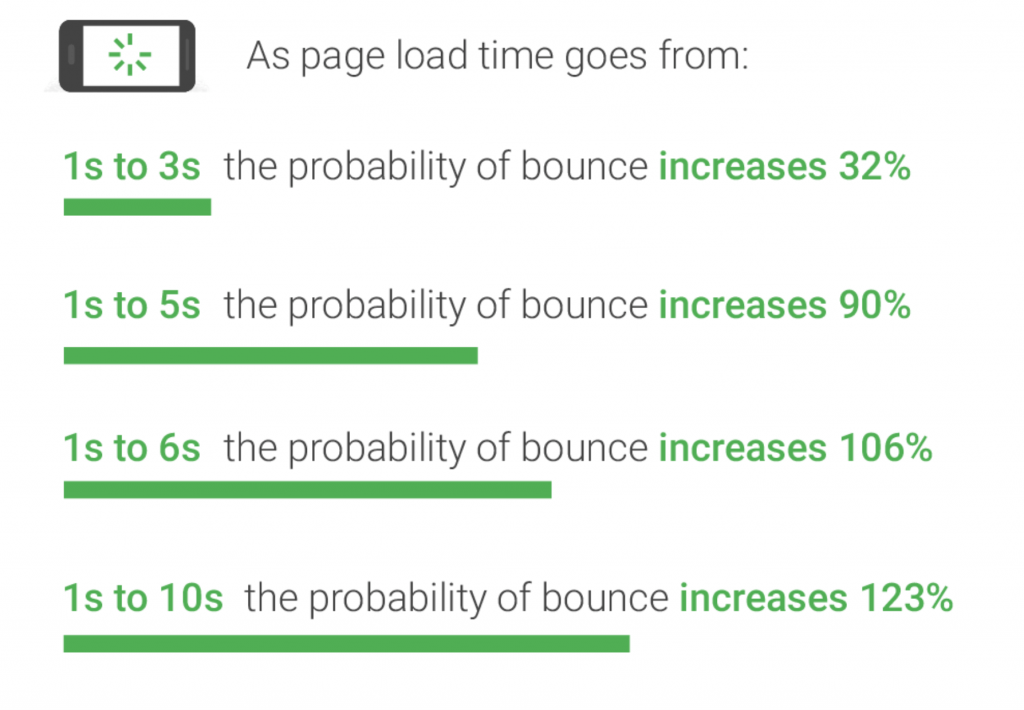
Ideally you want to get your page load time to less than 3 seconds. Anything upwards of 3 seconds will really kill your conversion and engagement numbers. Google doesn’t very often tell webmasters what factors impact ranking. Well, for site speed they made an exception. They were very clear. Slow websites will rank lower.
Goto Google PageSpeed and run your website through it. That should give you quite some pointers for improvement. Run GTMetrix as well. They’re a little bit different but also a really great tool to check your site speed with.
A/B test everything
You now are big enough to start A/B testing EVERYTHING! Because when you have more than 10k visitors a month just slight changes in CTR, conversion rate, etc. make big chances to your traffic and earning needle.
A/B test your title and description tags
Look at your Google Search Console data again. Export the data to a Spreadsheet. Look at the past 1 month only if you have enough data. You want the numbers to be as fresh as possible.
A/B testing your title and description tags is based on pages. Not based on people. So you have to put all your pages into different buckets or categories. Maybe based on countries when you have a travel blog. Or by type of dish (breakfast, lunch, dinner) when you own a food blog.
You want to make these baskets because when you A/B test something you need a control set. A set of pages that you won’t touch. And a set of pages where you make changes.
So if you have 50 urls in 1 basket, change 25 of those pages’ titles and description tags SIGNIFICANTLY. You probably have a standard way of building your titles of writing your descriptions. Or maybe you don’t then this is the right time to test if writing all your titles in the same way will get you more or less traffic.
Change the 25 titles and description tags all in one day. Note the date you made the changes. Start counting 3 days after the date you made changes. Depending on your traffic you need between 2 – 6 weeks of data for you to make an informed decision based on enough data. This is what happened when I changed 30 description tags.
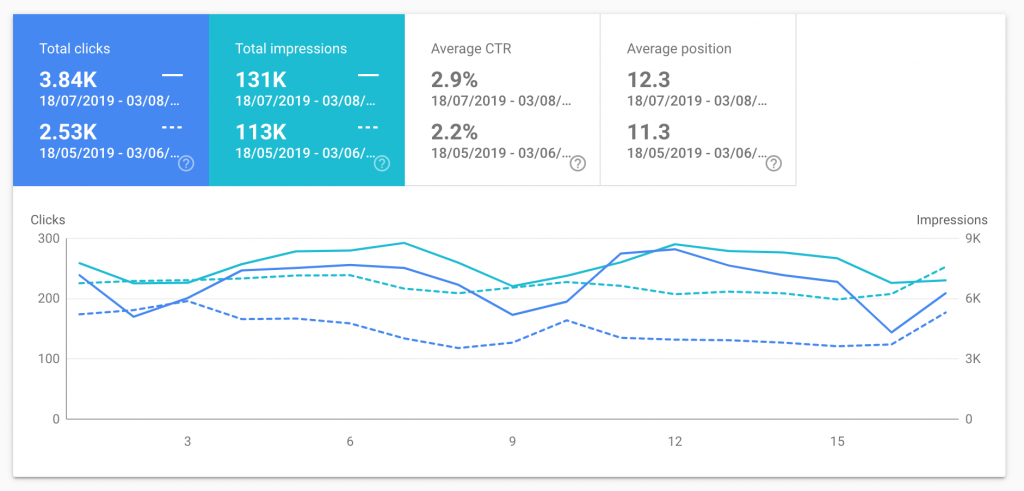
Search traffic went up 52%. Total impressions by about 16%. CTR increased by 32%. Quite an interesting result. But my overall rankings dropped! So here’s where the buckets enter the stage.
You again want to export this data and see whether your changes had any positive effect. You want to rule out a change in search volume. If more people search, you’ll also receive more search traffic, whether your CTR improves or not.
Compare the 2 groups. Look back (preferably the same part of the month). How many impressions did the control group receive prior to the test? How much did the treatment group receive in impressions? Do the same with CTR, position and clicks. Now compare these stats with 2 to 6 weeks of data 3 days after you changed the titles / descriptions.
See a big positive difference? Change the rest of your titles to match the new setup. Wait a couple of weeks again and recheck to make sure the changes you made, made a positive impact.
Rinse and repeat. Do the same with the other categories. Don’t forget to test on page things too like headings, add links to related content to increase engagement and add more visuals or videos to your content.
A/B test your emails
Before your reader even opens your email he will have seen quite a lot from your email already. Just from gazing their inbox, they’ll see:
- The sender
- The subject line
- The preview text
Optimizing these things can increase open rate a lot. You can easily double or triple your open rate if you make positive changes to these 3 things.
Know your audience and what email software they use
If you use Gmail’s app on your phone you can only read about 60 characters of the preview text before it’s cut off. If you use the iPhone Mail app you can read more than double. So if you know on what devices and with what apps your users open your emails, you can optimize for the biggest common denominator.
There’s no one way to improve open rates. These are some general guidelines you can follow. But I encourage you to test, test and test.
The basics: be respectful. Make sure your email works. Your images are shown.
Be personal. You’re emailing people, not robots. What are their needs? What do they want to know? What’s in it for them if they open your email?
A higher email open rate might still hurt your business
Always look at your number. What would you prefer? A 50% open rate with a 1% conversion rate. Or a 20% open rate and a 5% conversion rate? If you make your headline to clickbaity it could hurt your click through rate to your website and hurt you conversion rate. Stay honest. Mention the real value people get from the email. Not the maybe if you’re very lucky and do this and this and that.
A/B test your website to capture more emails
What opt in forms are you showing on your website? Where are they showing? What do you promote when you show the opt in form?
If you use Sumo you can easily try different messages and see how that changes conversion rate to subscription. If you Go Pro you can automize all that. You don’t need to create a new form or change an old form to see if that increases conversion. You can just start an A/B test and keep the winner.
Another nice A/B test is to add a Welcome Mat or another more in your face kind of opt in form for you emails and look at what happens to your organic rankings. You should see your engagement figures go down a bit if you focus too much on business value vs customer value. And if your engagement numbers go down, so will probably your organic rankings. If you don’t get a lot of organic search visitors, or you don’t care or the business value is just too big… Go for it. But if you see a steep drop in rankings… You know why it happened. If you revert all the in-your-face-stuff you added, your rankings should get back to normal.
Look up outdated or bad looking content and create better versions
Ever came across a research paper or a piece of real interesting content that looked like cr*p? You just hit the jackpot. It’s this kind of content that usually gets a lot of inbound links. Imagine how many links you could get if you visualized the content? Made a more visual enticing page? Created an infographic.
Run the url you found through Moz.com’s Link Explorer or through Majestic to see how many links it picked up.
This page is a nice example. It lists 50 ideas for research papers. Just text. Nothing more. Probably took em an hour to build the page.
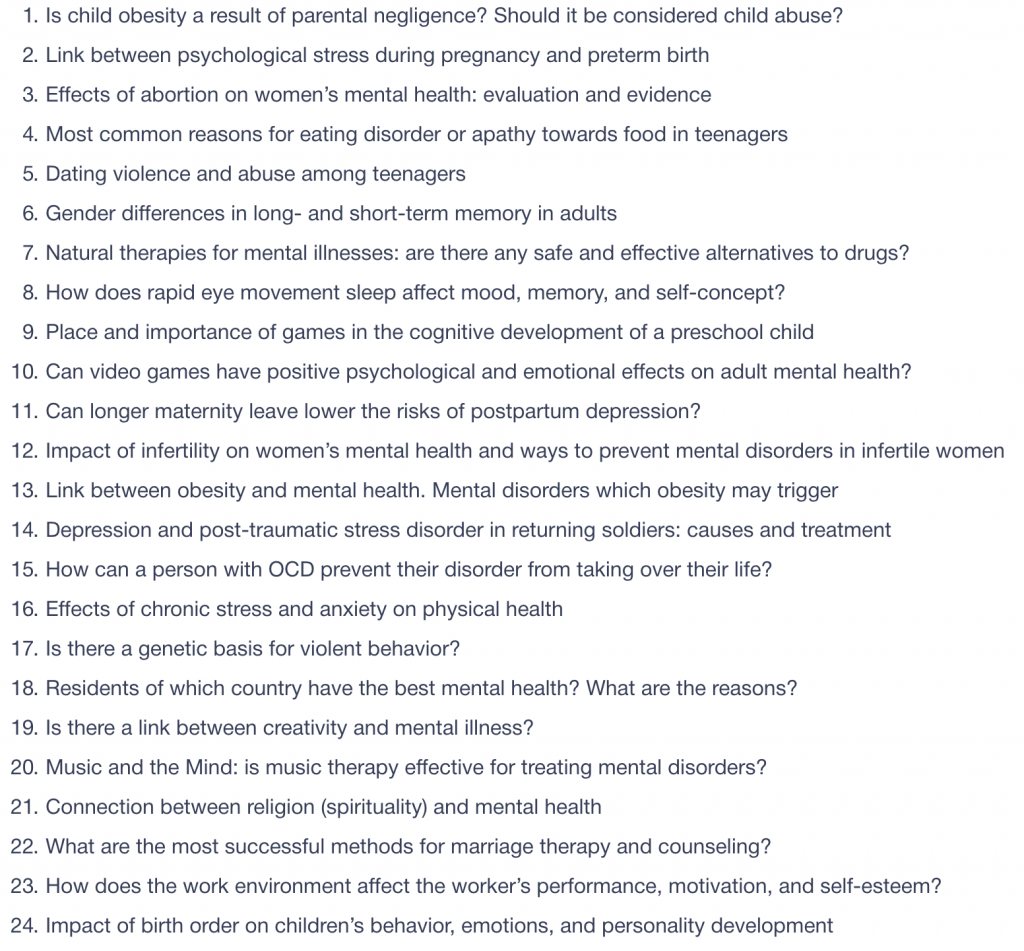
Guess how many links it picked up? 10? 20? 50? Think again

88 links from 59 domains. You have 59 websites to contact once you repurpose this content into something which IS visually appealing.
You could also (once you did you entire round of outreach) contact the website that made the original content and tell them you made a great addition to their content. Give them the infographic (or whatever you made) and ask if they could link back to your page.
Don’t repurpose content when that content didn’t receive any links or only a few links. If you make 1 infographic and have 59 chances to have it featured on another website, that’s a great ratio to do the work. If another url received 3 links for their content… I wouldn’t put the effort in. Chances are you won’t get anything out of it.
Do a small user study and get dozens of new ideas to optimize your website
Ask at least 8 friends and family members to have a look at your website. Give them a specific task. Create a few tasks for every person you’re asking to help you. Like:
- You’re interested in X and are going to buy related product Y
- Signup for my newsletter
- Find the return policy and tell me the number of days to return a product
- How can you lookup your previous orders
- What are the product benefits for product Z
- Etc
If you ask this to a dozen people in your direct network, you’re going to get so much information out of it. Don’t do this over the phone or anything like that. Invite them for dinner or a cup of coffee. Let them sit behind your laptop (preferably even theirs because you’ll see how your website looks on a different device and how someone who’s accustomed to their own device) to do the tasks.
Get them in a talking mood. They should be constantly talking about what they’re doing. About what they’re feeling. Write everything down or record the session so you can dig into every little detail they give you.
Don’t just listen to what they’re saying. Look at where they’re looking. Look at where the mouse is going to. Is it logical what they’re doing? Should you change the layout? Don’t tell people where stuff is. It’s obvious for you because you live in your website. They don’t. They’re like your normal users / customers. And remember: the customer always tells the truth, not matter what. So don’t explain to them way you made a certain decision. Turn that around and think why he/she went about doing the task the way they did. Think about how you can improve that process.
If you give all your subjects 3 tasks I’m sure you’re going to get at least 10 to 20 things you can improve on your website. Don’t invite more than 10 people. 8 would be ideal. 20 is really overkill. You’ll get the same answers over and over.
I have done dozens of user studies over the years for my own websites and my customers websites. It always amazes me how people interact with our websites. You can put 100 hours into a webpage. Really think things through. But reality will kick you in the face and will force you to make changes.
Use automated tools to collect user feedback
You’re now big enough to collect automated feedback from your users. Both qualitative and quantitative.
You can collect quantitative data with a tool like CrazyEgg. You implement their pixel on your website and it allows you to records user sessions. See scroll depth, where people click, etc. etc.

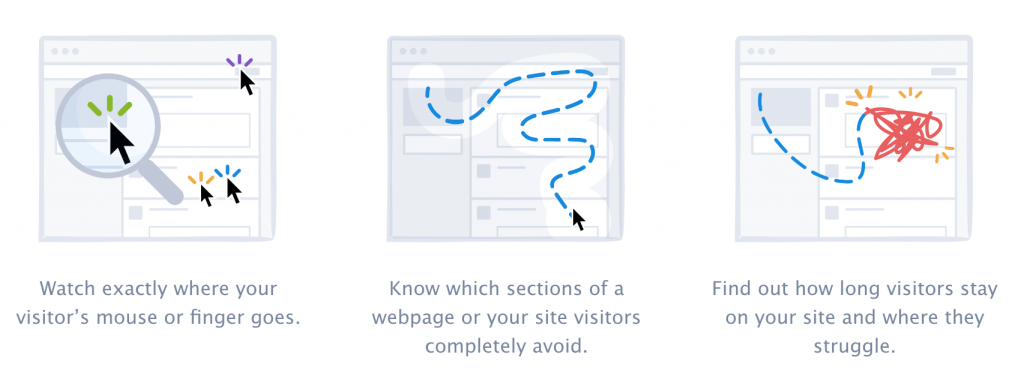
Once you’ve identified a webpage or part of a page where you could make improvements, CrazyEgg allows you to start an A/B test and see if the changes you make actually did something positive.
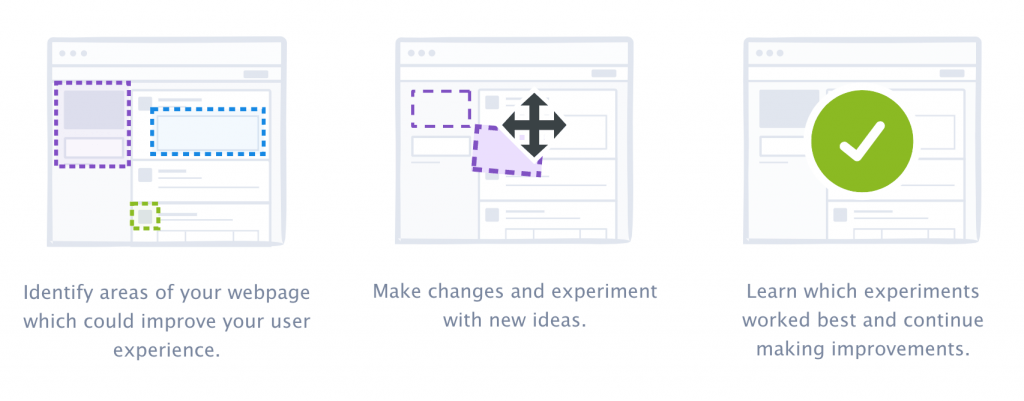
You can add a conversion goal to the A/B test. The version which has the highest conversion rate will be selected as a winner. You can subsequently implement those changes on your website. Rinse and repeat.
Use a survey tool for qualitative feedback
There are tons of feedback tools out there.
Here are a few. The basic steps you go through are all the same. Implement a pixel. Create a form. Tell the Survey Tool where to display the survey.
With most basic or free versions you can tell them on what pages to open, or after how many seconds people are on a certain page, or after they visited a number of pages, etc.
Ask open ended questions like: What are you missing on this page? Or: If you could name 1 thing that is stopping you from buying at us, what would it be?
Asking that last question after somebody made a person is also a really good one. They actually did make the picture, so it’s relevant information. Your target audience. You want tot attract more buyers like them. So if you can pinpoint why they ALMOST didn’t buy, you could make great improvements on your website.
Ask your audience for help
I’m coming to the conclusion of this article. More than 12,000 words of advice on how to grow your blog. A lot of information. Definitely not everything, but a lot of (hopefully helpful) information nonetheless.
If you’re out of ideas, literally ask your audience if they can help you find ways how to improve your website. Ask it through email, on Twitter or Facebook. Or just plain and simple at the end of your post. So here goes: if you guys could name 1 thing that would improve this page, what would it be?
I look forward to hearing from you guys. All comments will be answered. Chances are that if you make a great comment I’ll check your website out and give you some free advice. (Remember reciprocity?! :))
